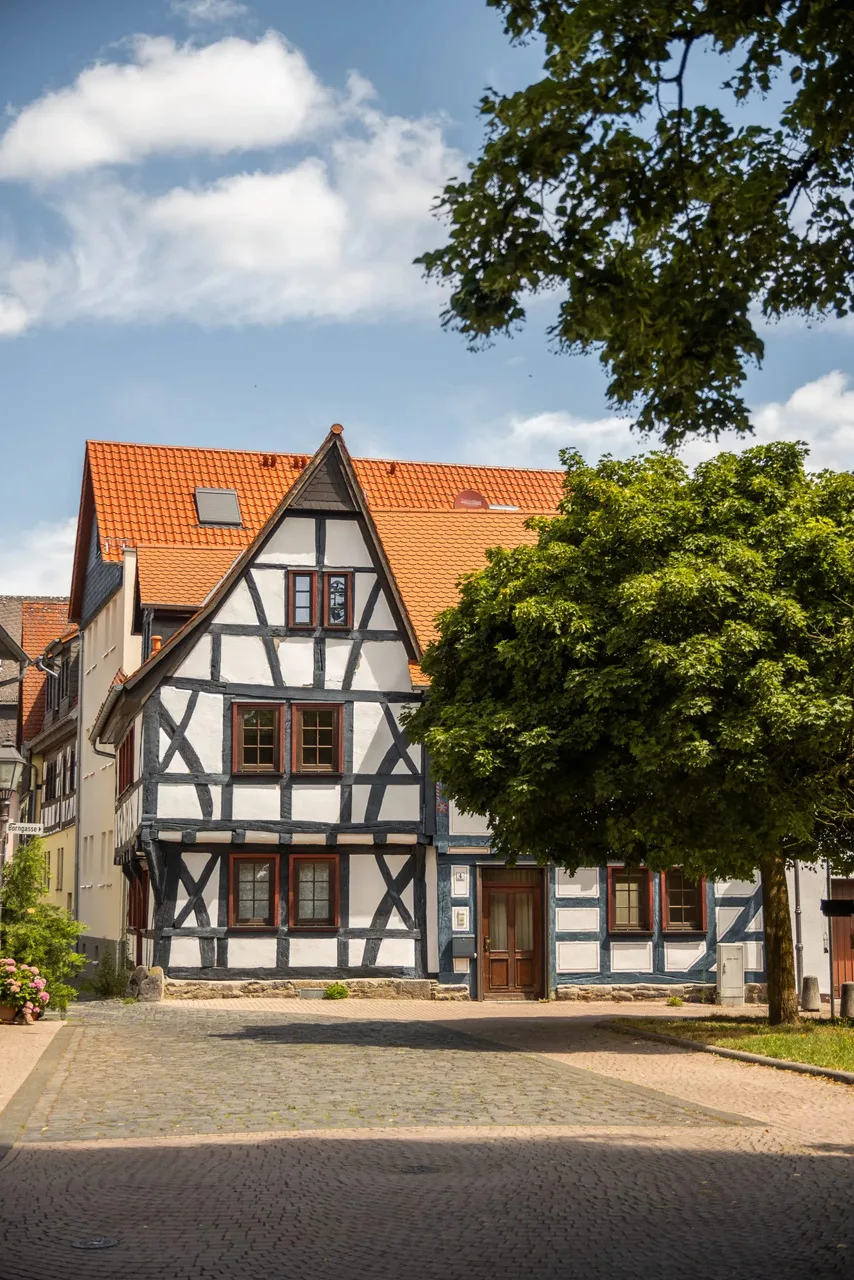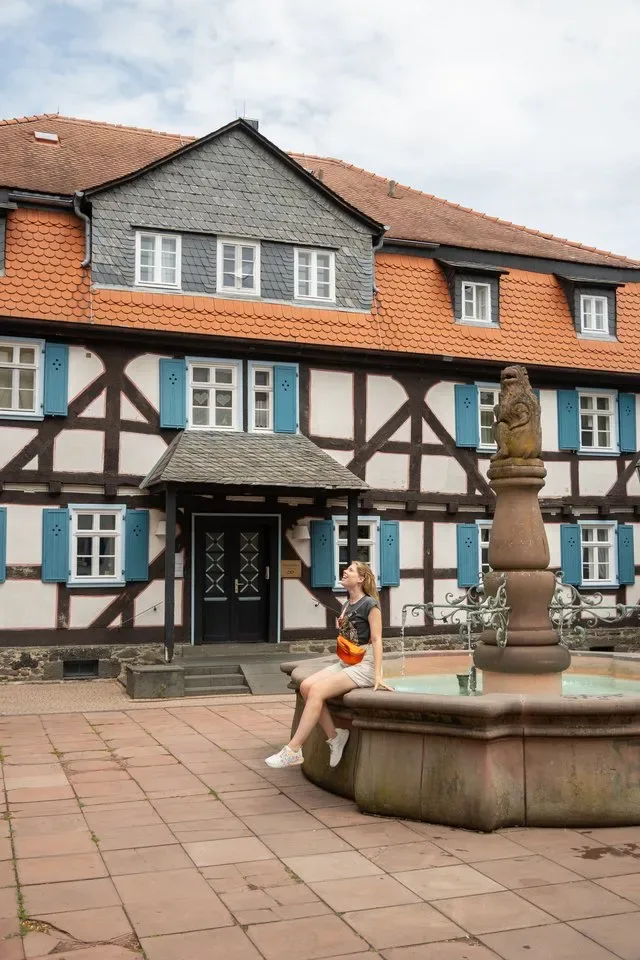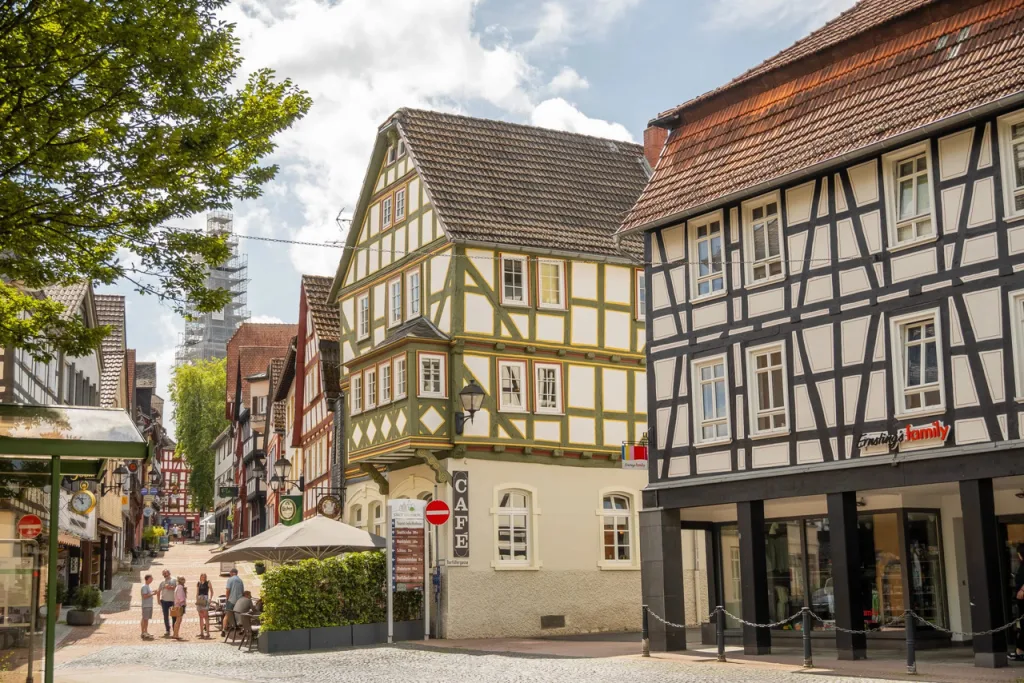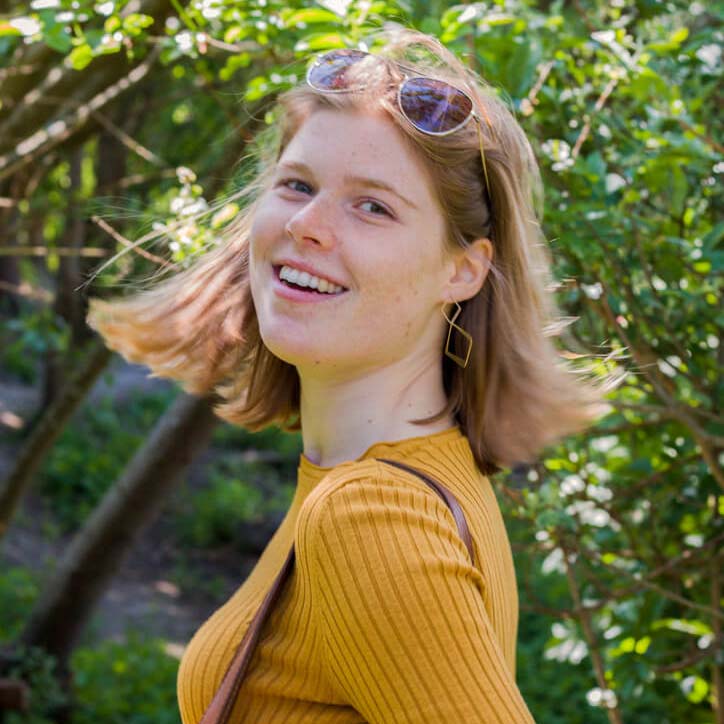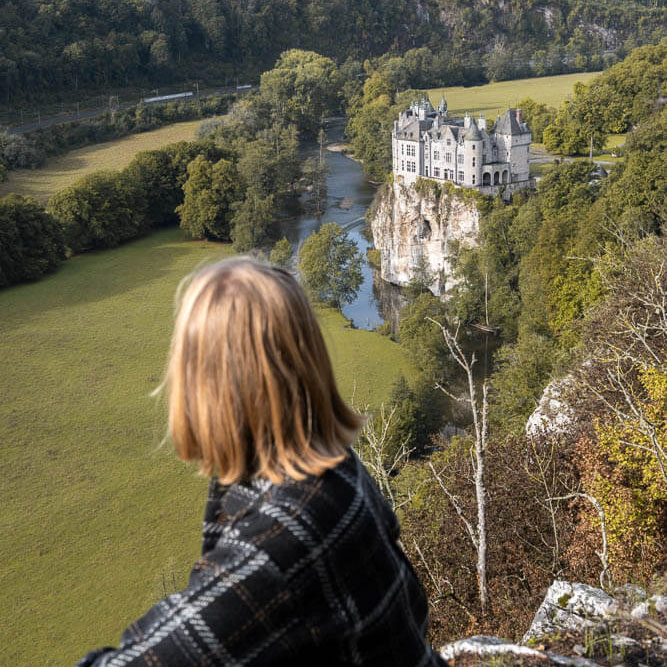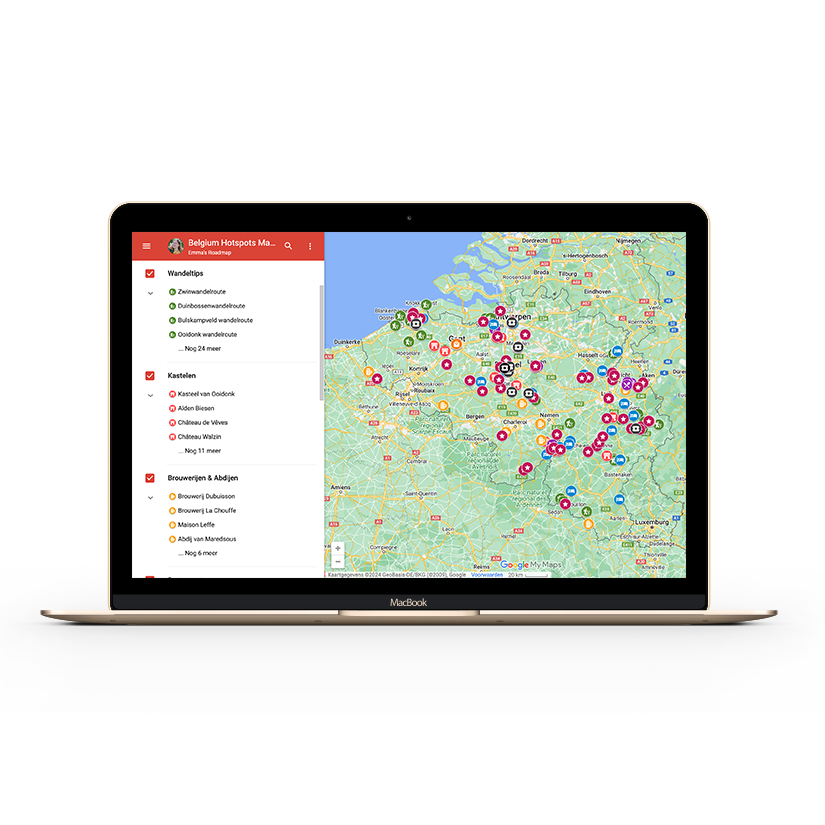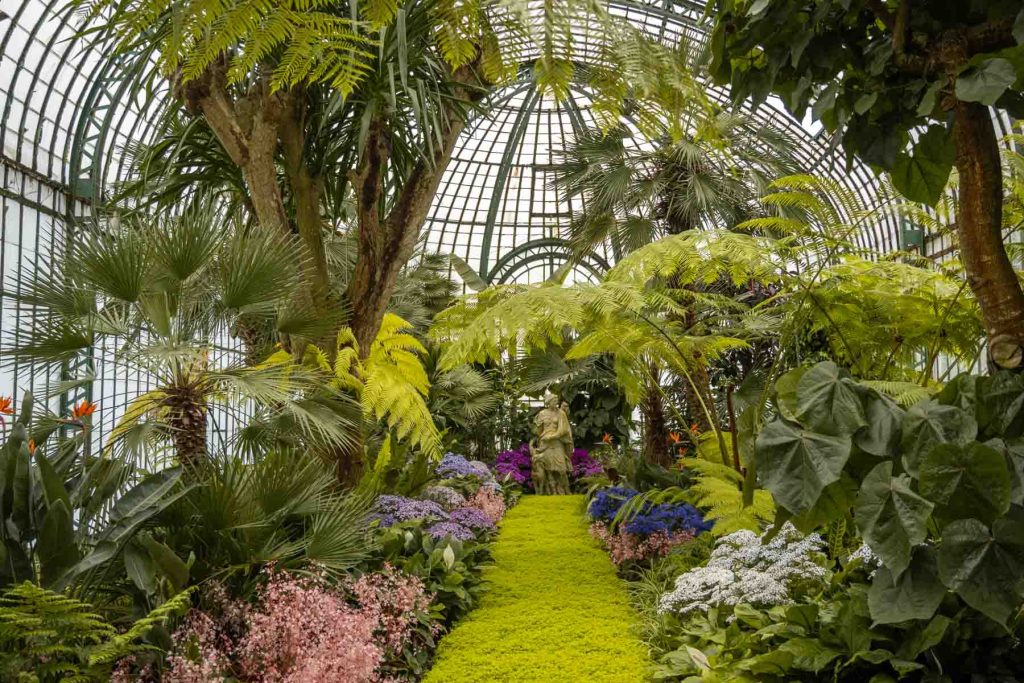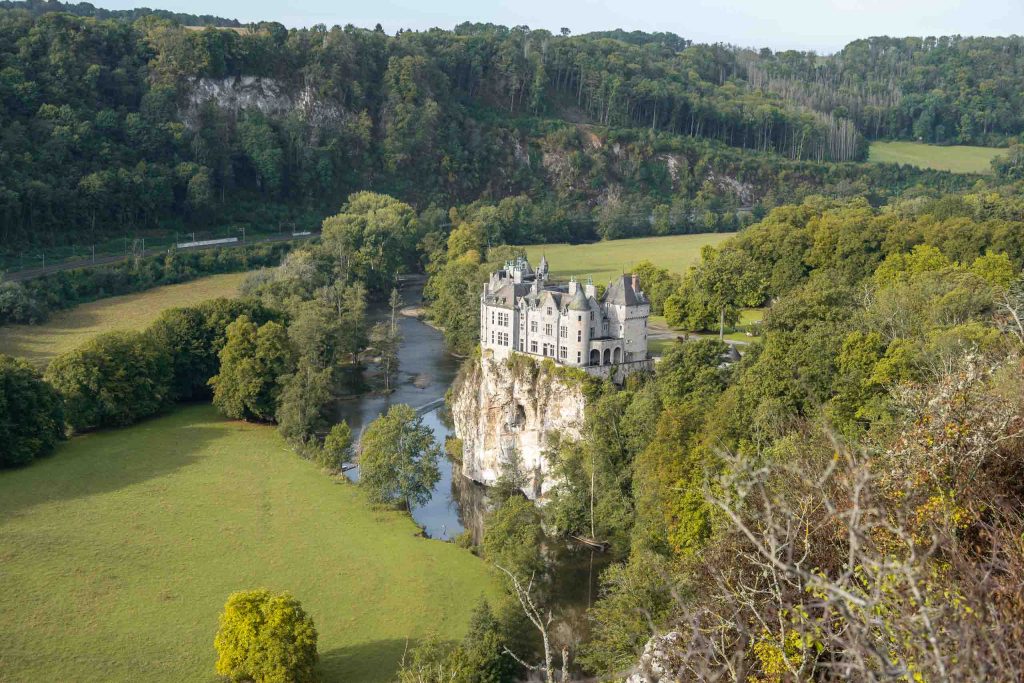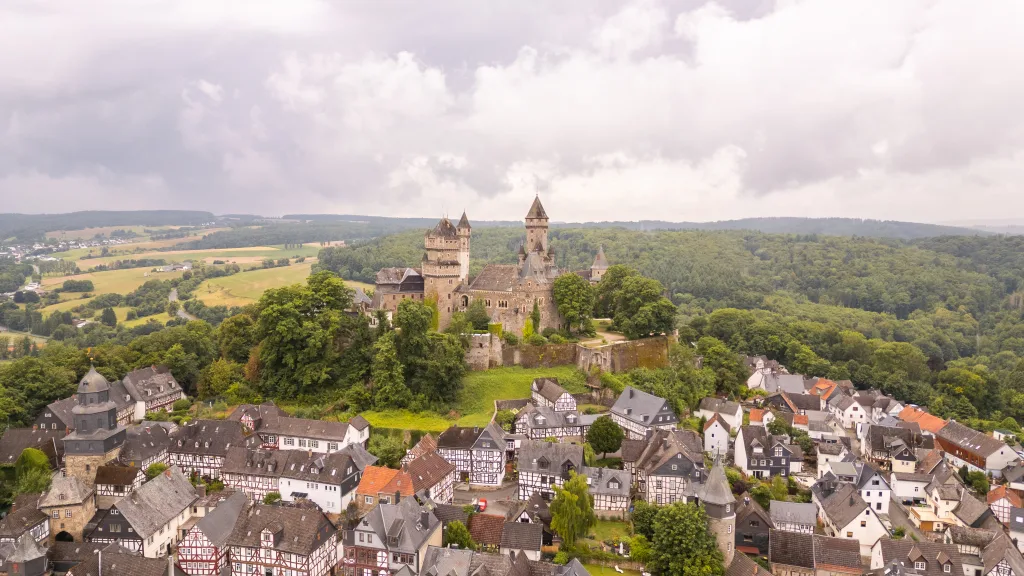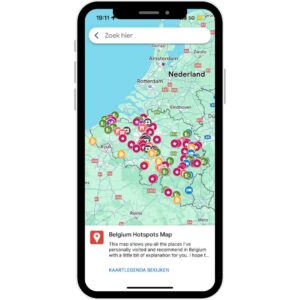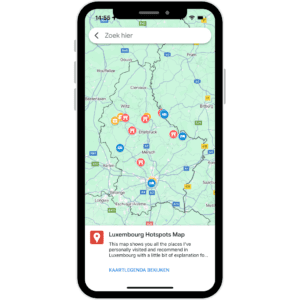Grünberg is one of those towns that you don’t expect much from, but that immediately charms you. I ended up there during a motorbike trip through Germany, stayed the night and discovered a surprisingly green place with a lot of history, half-timbered houses, springs, and… an XL marble run. Yes, really!
Below you will find an overview of the best things to do in Grünberg, Germany—including fun facts and practical tips.
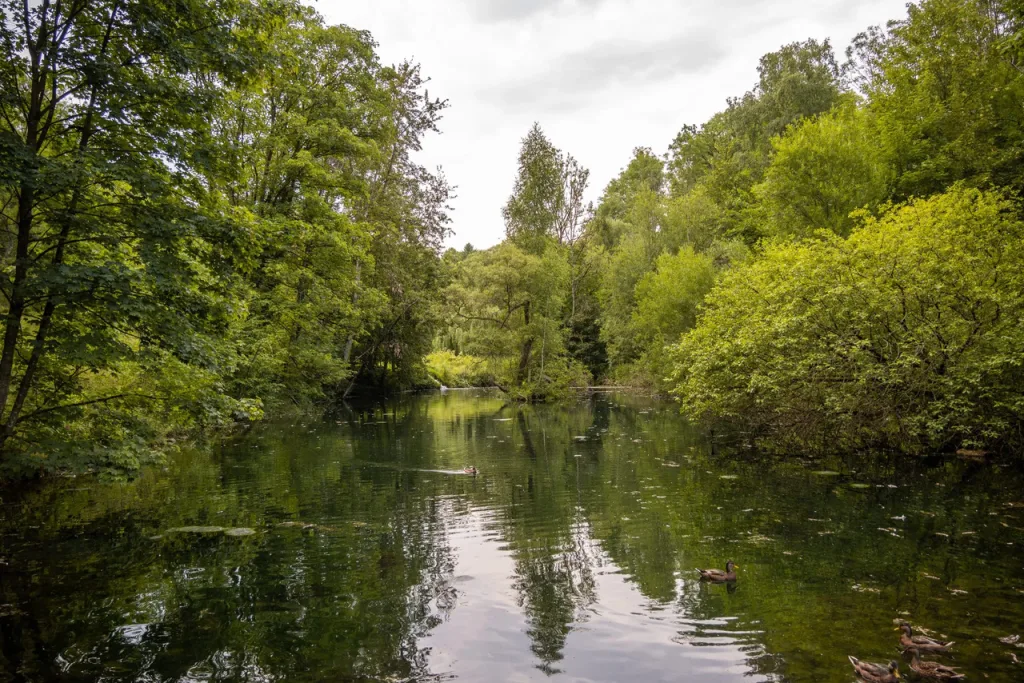
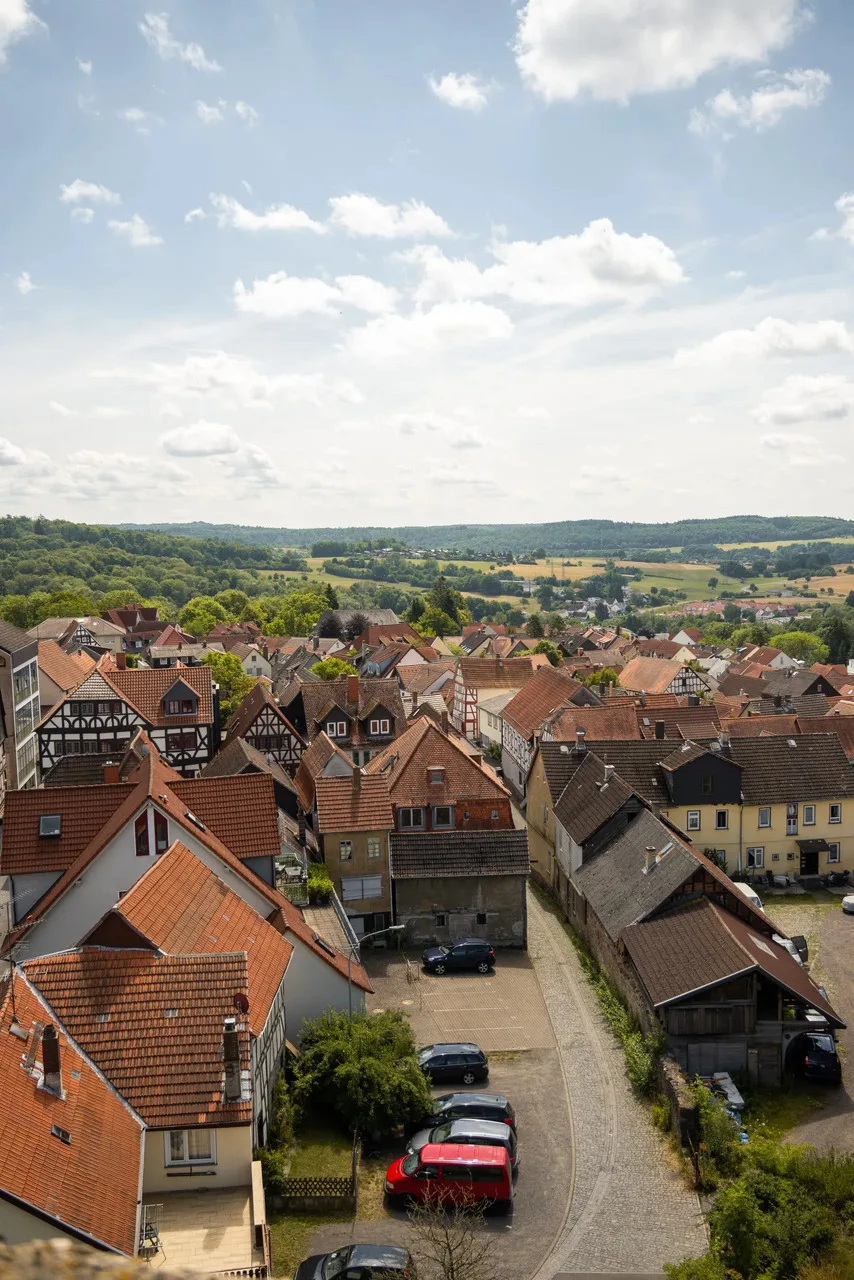
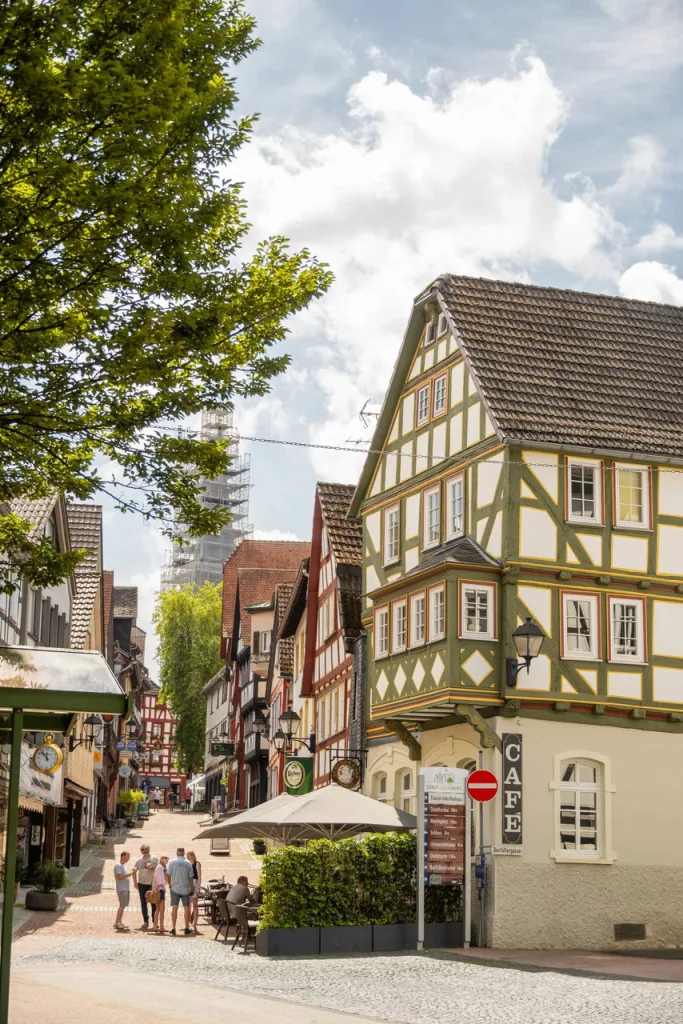
1. Walk through the valley with water sources
What surprised me most about Grünberg was not the beautiful half-timbered houses, but the green valley just below the town. While the centre is located on a hill, you walk down a sloping path towards a valley full of springs, ponds, trees and walking trails. And it’s not just any piece of nature – this place turns out to be crucial in the history of Grünberg.
In the past, Grünberg had no fewer than six water mills in the valley. These mills pumped water from the springs and ponds up to the town above. Quite an achievement for that time, because getting water up without electricity or modern technology is no easy feat. To do this, they used a complex system of pipes – a feat of medieval engineering.
Today, you can get a glimpse of how this system worked by stopping at the Brunnenhaus. This is a small stone building on the route down, just before you enter the valley. The door is always open and inside you will find information about how the water used to be pumped. It is not very big, but it is a fun and educational stop.
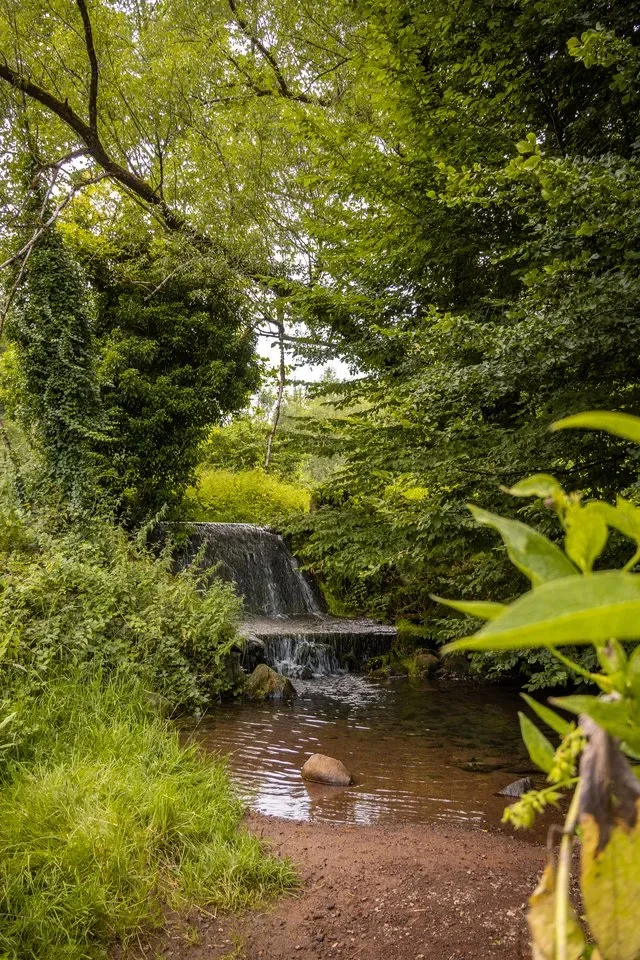
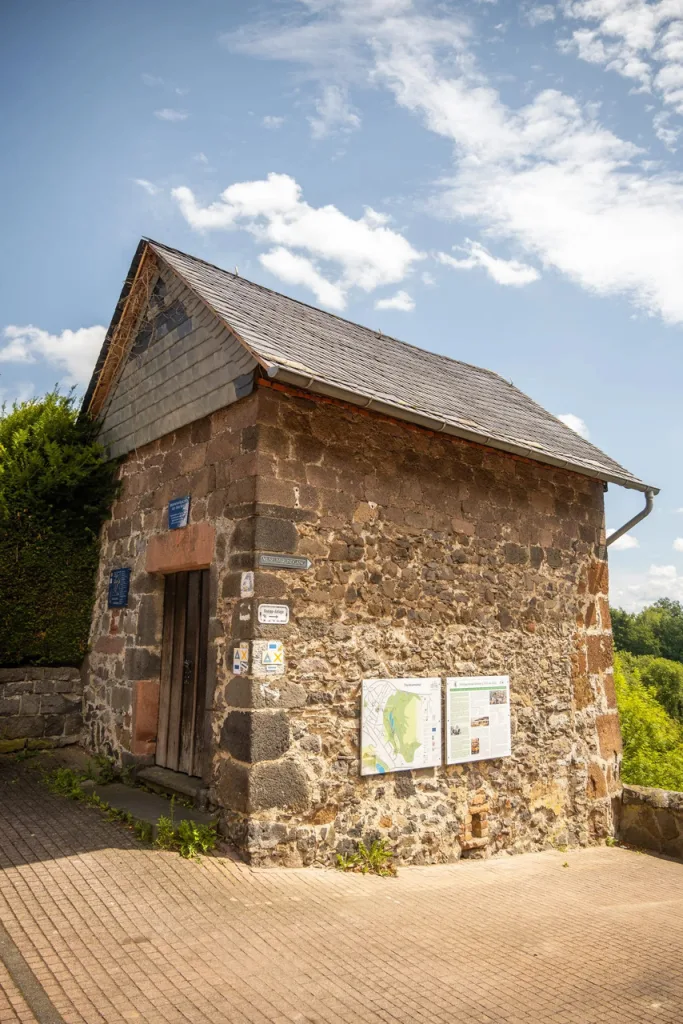
Tip: on the way down, you will also pass a small splash pool where you can cool off. Bring a small towel if you want to dip your feet in the water in summer.
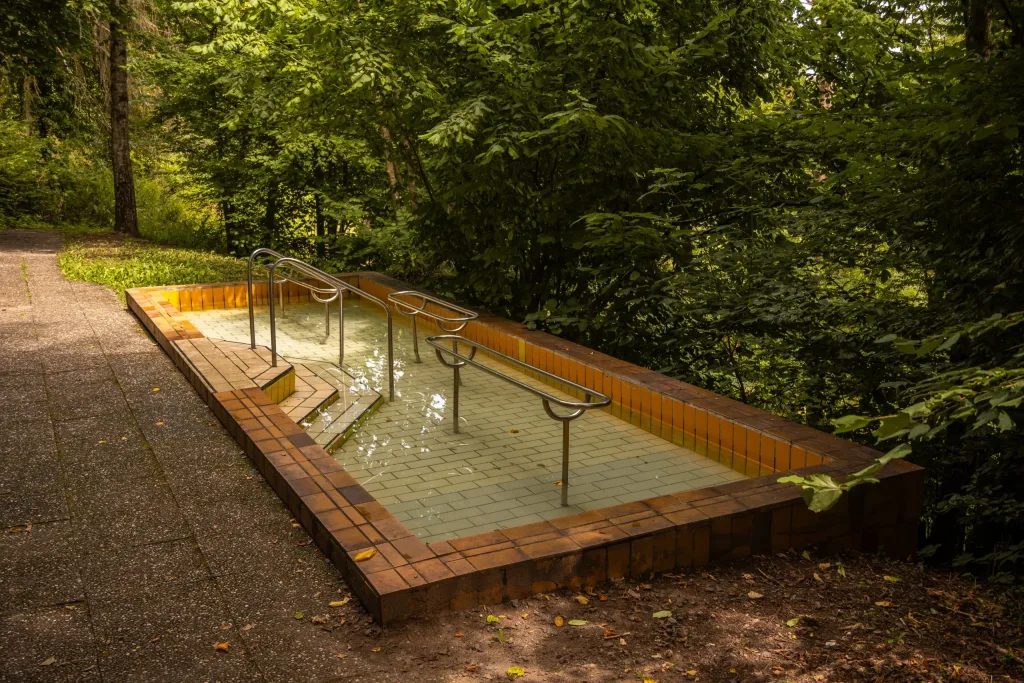
2. Marbles down the XXL-Kugelbahn
Honestly? I never thought I would get excited about a marble run on a trip through Germany. But the XXL-Kugelbahn in Grünberg looked really fun — especially if you’re travelling with children, but even without them, it’s still a lot of fun.
Along the footpath that leads from the town to the valley, there is a large wooden marble run. Not a small toy, but a sturdy construction of wooden gutters, bends and slopes that stretches over a large part of the route downhill. These symbolise the path of water.
At the top, there is a vending machine where you can buy a wooden marble for € 1. You drop it into the starting point of the track, and then it rolls downhill with you, from station to station.
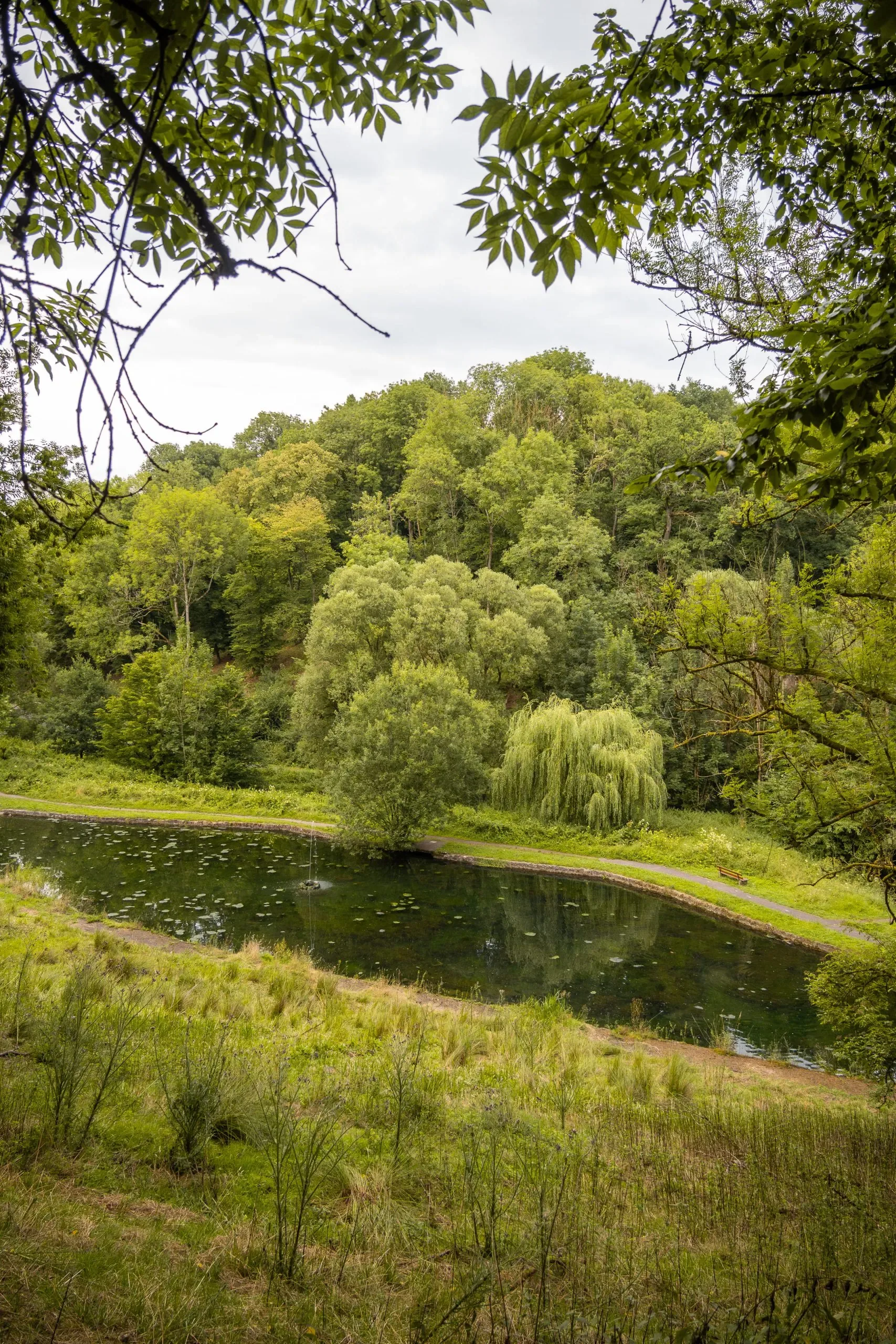
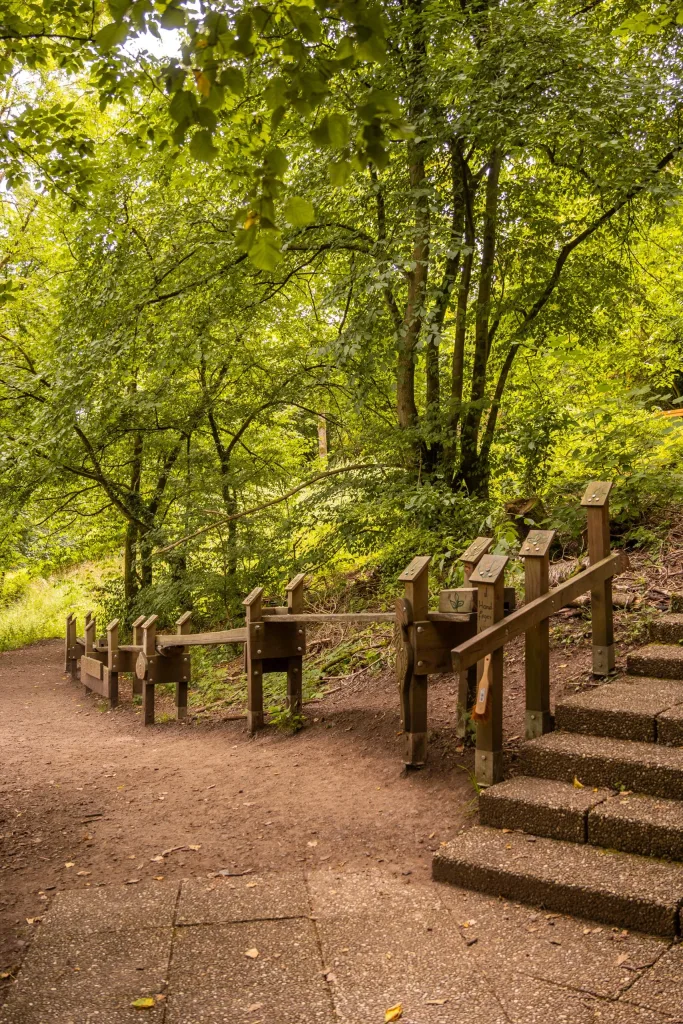
3. Explore the Marktplatz
Grünberg’s Marktplatz is the heart of the town — literally and figuratively. Not only does your visit to the centre start here, but also the official Historischer Rundgang: a signposted walk past 16 historical sites in and around the town (such as the town tower, monasteries, old brewery, university building, etc.). So it’s a good idea to pause at the signs and follow the route.
Grünberg used to lie on an important trade route between Frankfurt and Leipzig. As a result, the Marktplatz was full of taverns and inns where traders could spend the night — almost every house on the square had a name such as the Eagle, the Angel or the Wild Man. Today, those inns have been replaced by residential houses and cafés, but the atmosphere has remained.
Fun fact: until the 20th century, all the half-timbered houses here were plastered because it looked “fancier” than wooden facades. Fortunately, they have since reversed this trend and you can once again see the beautiful wooden structures.
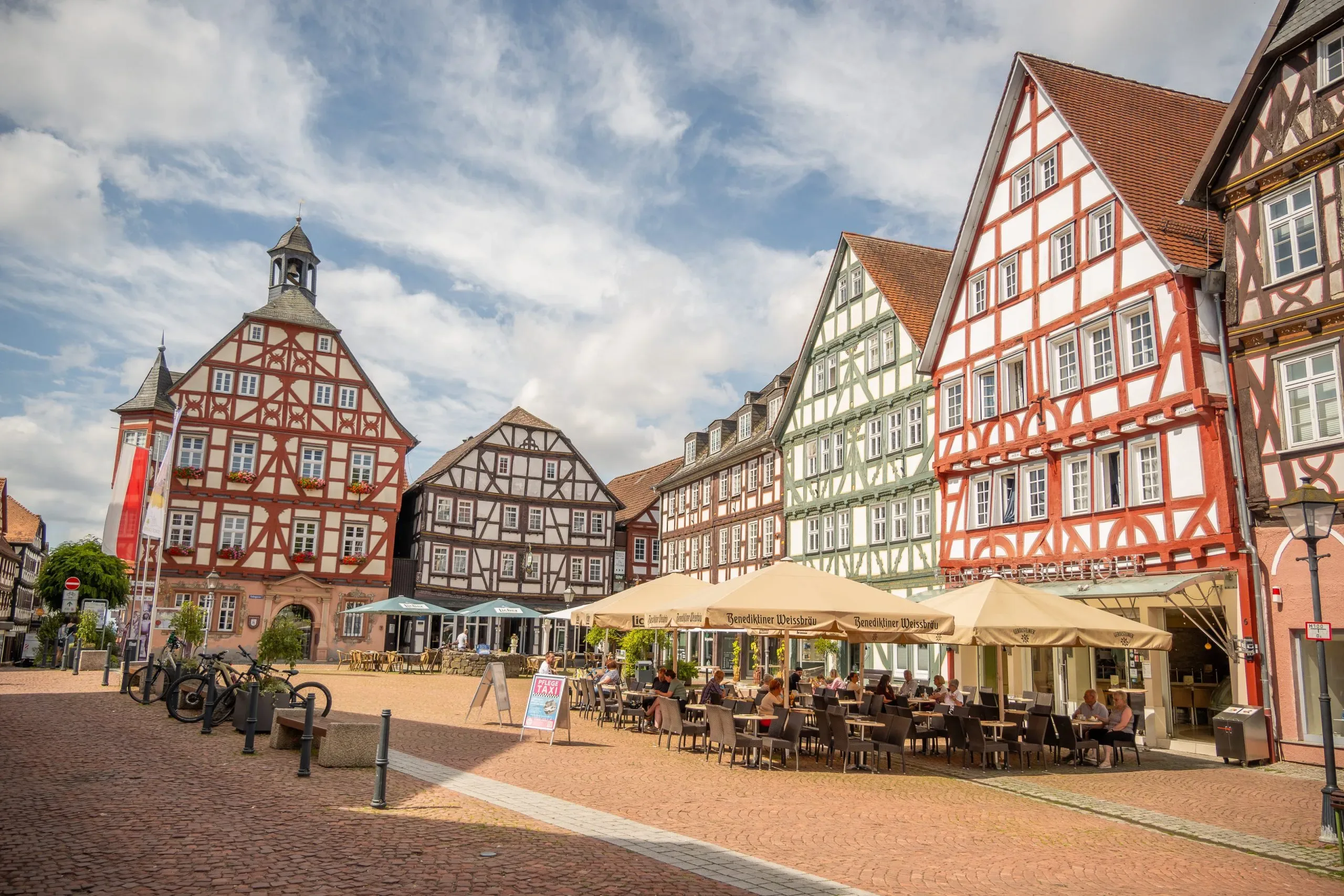
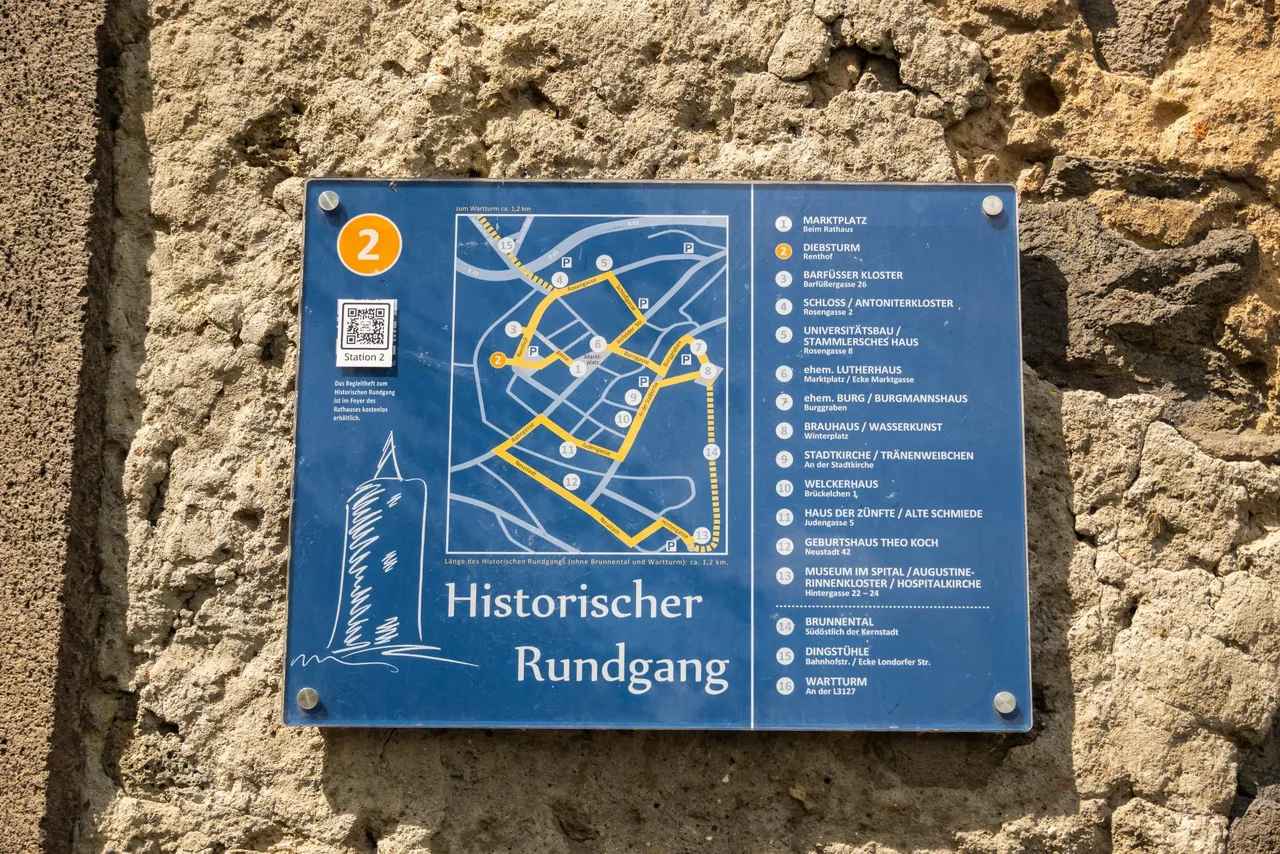
Tip: Look out for the Hessen figure on some facades — it indicates that the house was built after 1500.
What else can you see here?
- Model of Martin Luther’s lodgings: Luther once spent the night here, in an inn on the square. The house no longer exists, but a miniature version now stands on the same spot.
- Exposed well: During the reconstruction of the square, a medieval well more than 20 metres deep was discovered. Today, you can view it, along with a small work of art next to it.
- IJscafé Marktplatz: Ideal for a tasty break on a sunny terrace.
- Tourist office: Handy starting point for information, walking maps and, for example, to pick up the key to the city tower.
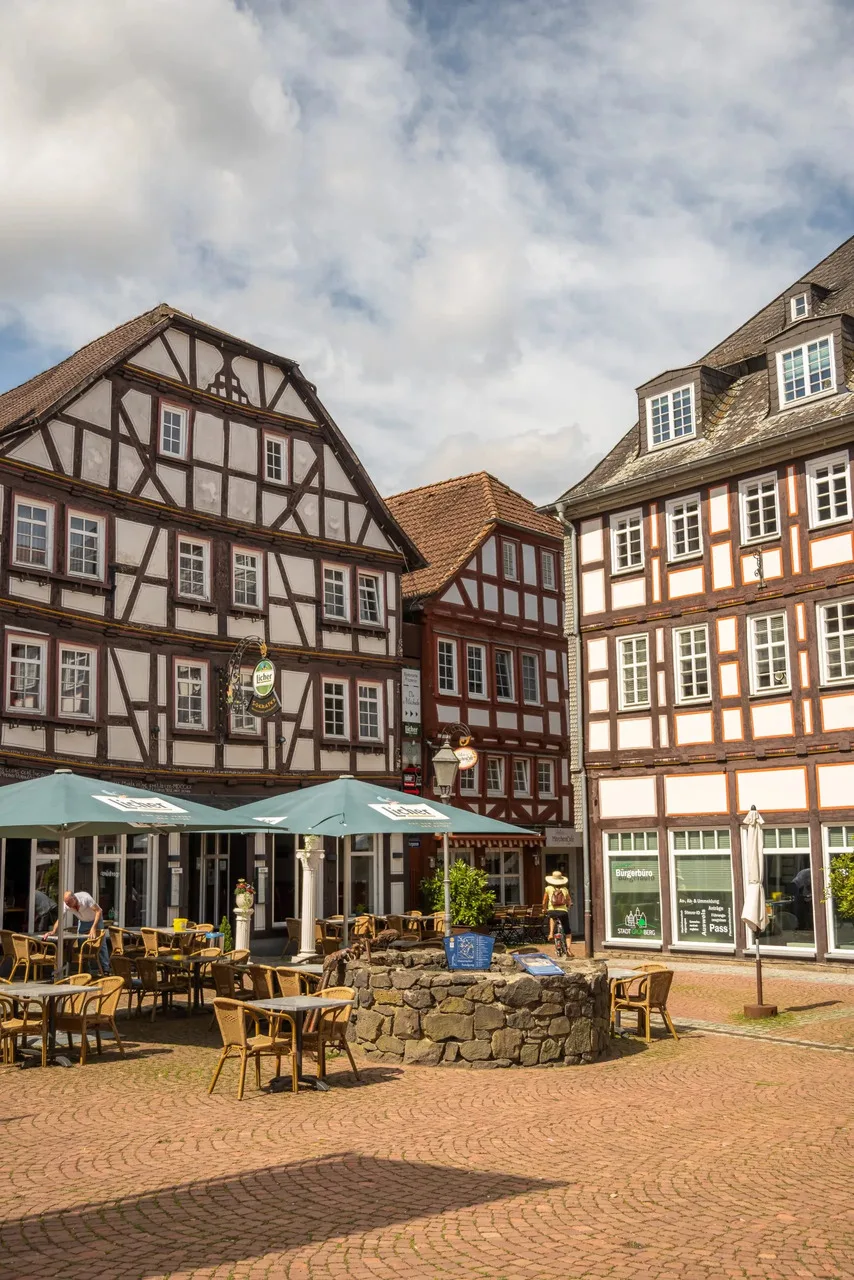
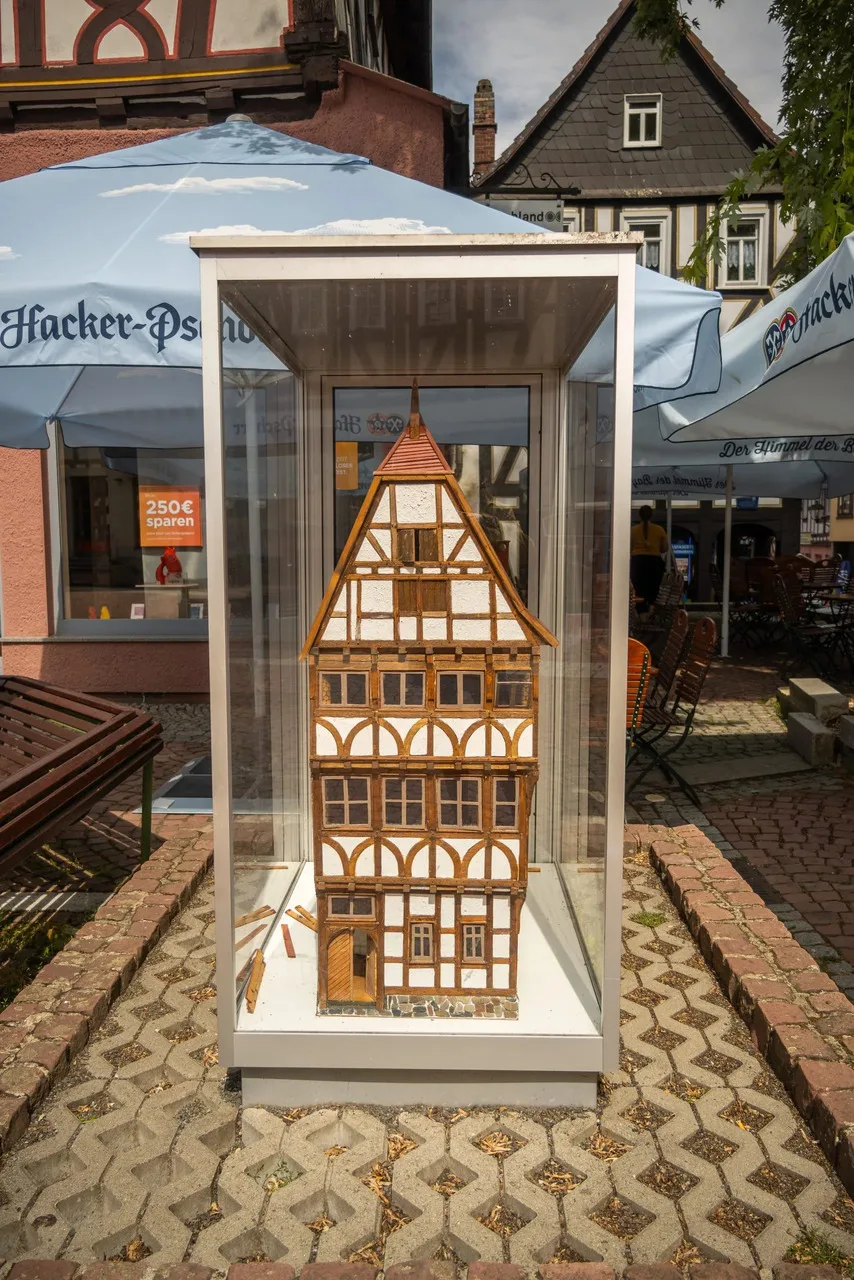
4. Climb the Grünberg city tower
You can see it from the market square: the Stadtturm, a sturdy tower with a striking teardrop shape. It was once part of the defensive wall around the city and served as a prison — including a 9-metre-deep dungeon at the bottom. Today, you can climb it yourself.
What makes this tower extra fun is that you don’t need a guide. There is a sign on the door listing all the places in town where you can pick up the key, including the ice cream parlour and the tourist office. Then you can explore the tower on your own.
Once inside, climb the wooden stairs to the top, where you will be rewarded with a panoramic view of Grünberg, the surrounding forests and the valley. On clear days, you can see for miles – even as far as Frankfurt! – and really appreciate how green and rolling this region is.
And that water drop shape? It is particularly striking when you walk around the tower. It is a unique architectural style that you don’t often see in this region.
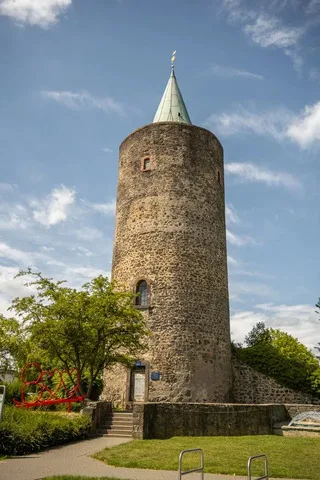
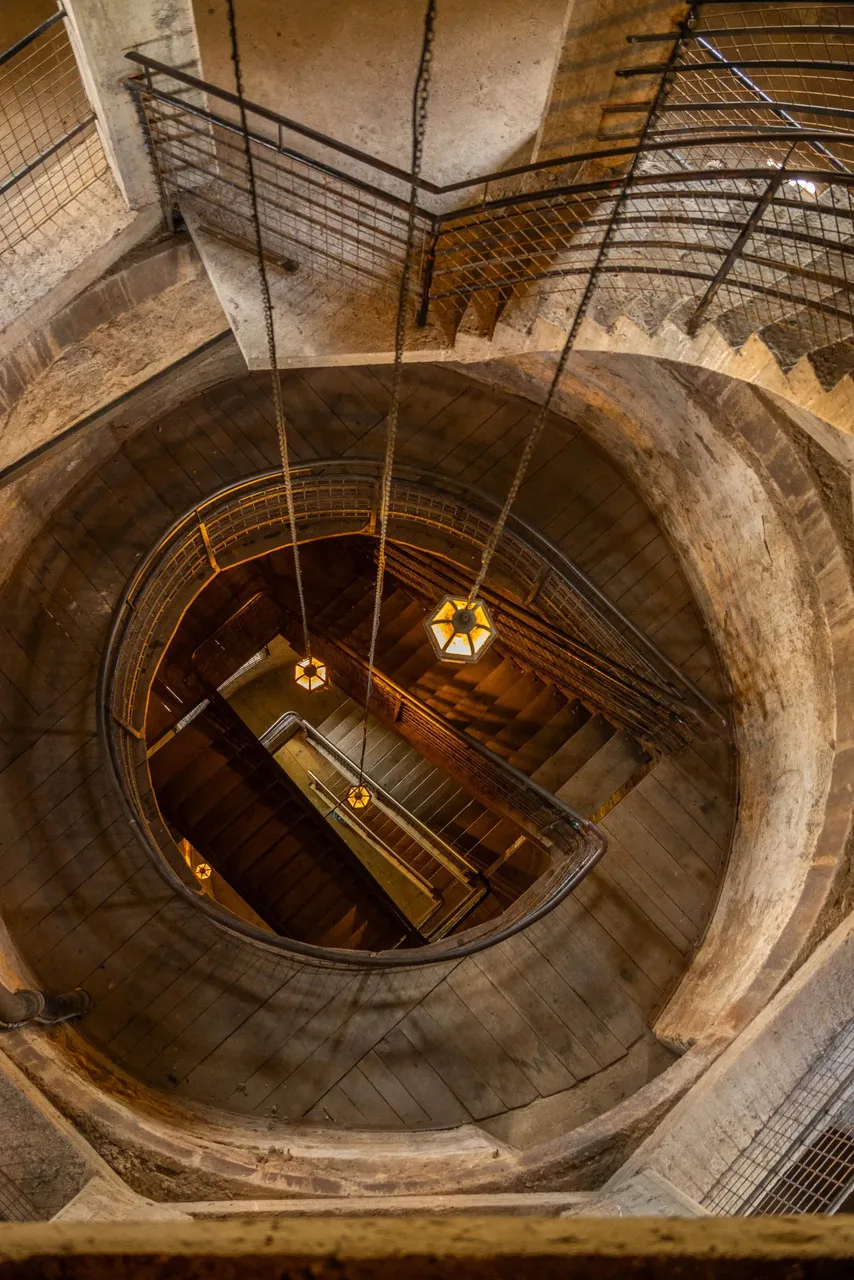
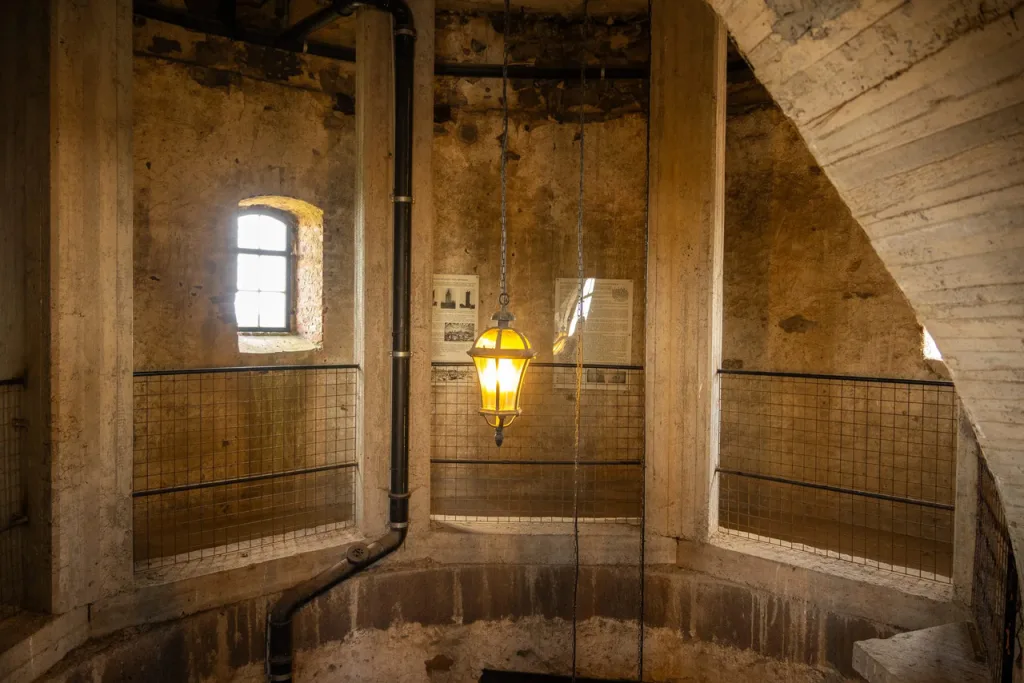
5. Visit the Jewish merchant’s house (Gildehaus)
If you are interested in old crafts and everyday life in the past, then the Jewish merchant’s house, also known as the Gildehaus, is definitely worth a visit. This charming half-timbered house is located in Judengasse and is part of Grünberg’s small town museum.
Inside, you literally step back in time: each room is decorated around a different profession that was practised in Grünberg. Think of a shoemaker, a baker, a blacksmith, a carpenter… You will see original tools, workbenches and utensils — as if the craftsmen could return at any moment to continue their work.
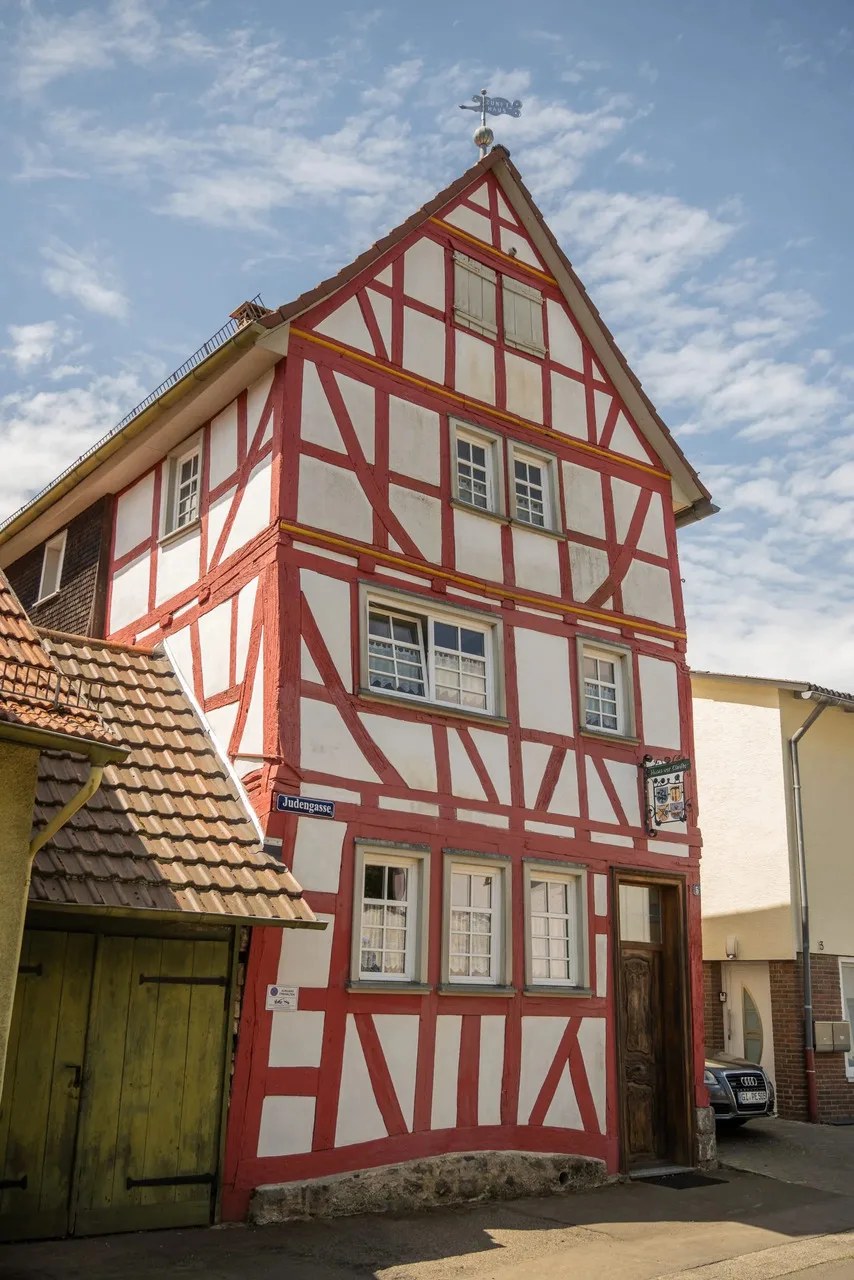
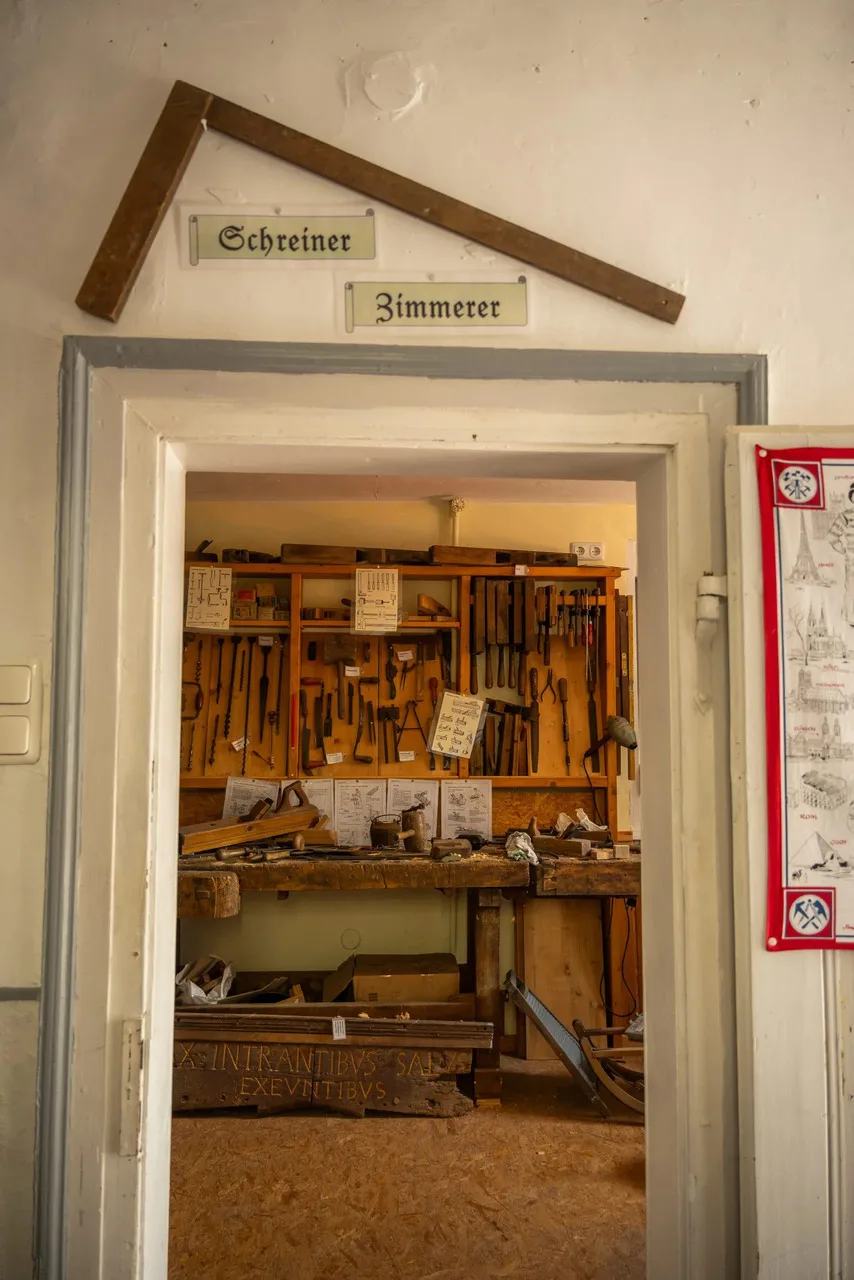
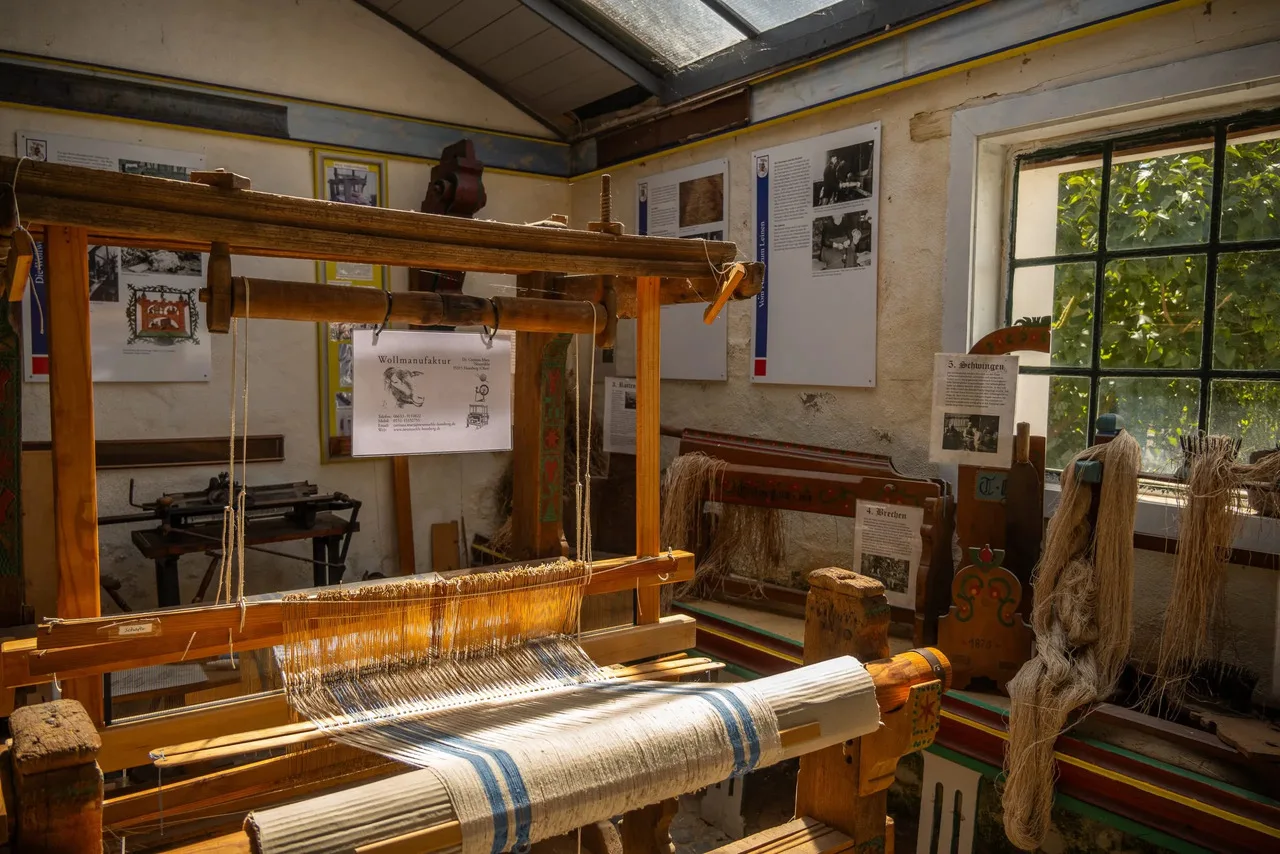
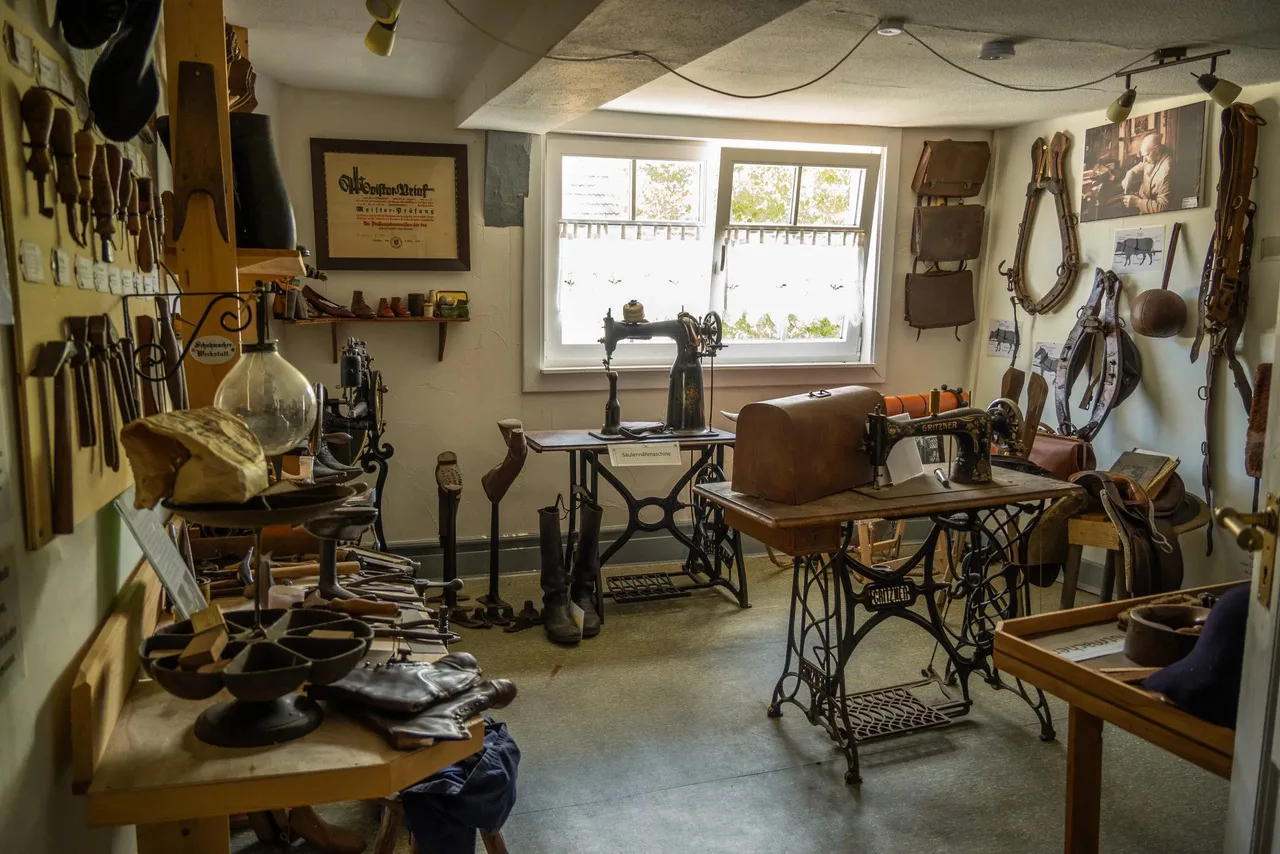
Next to the Gildehaus is an old blacksmith’s workshop, which was still in use until 1960. Today, it is part of the museum and gives you a good idea of what life was like in such a workshop in the past.
Tip: the museum is not always open. Ask at the tourist office on the Market Square when you can visit it — I think it’s definitely worth it!
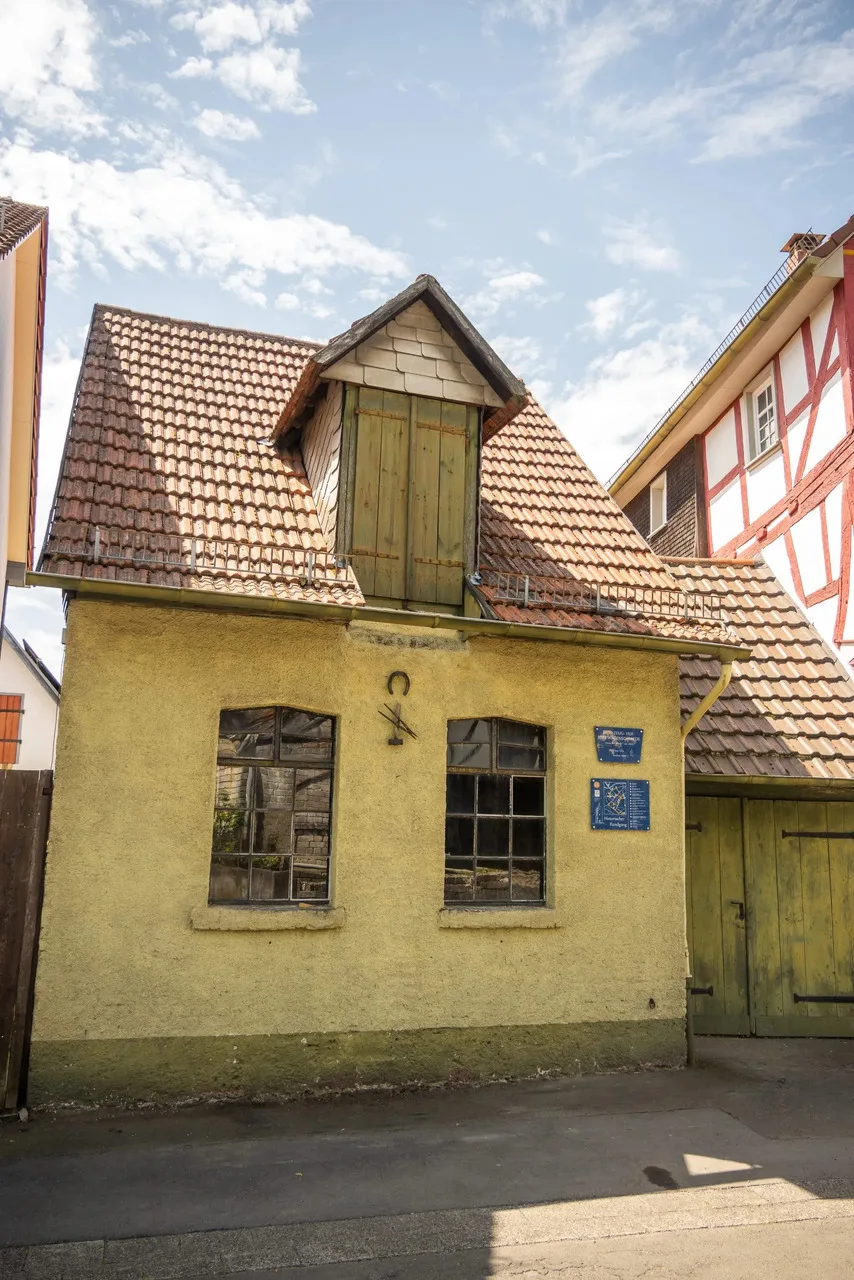
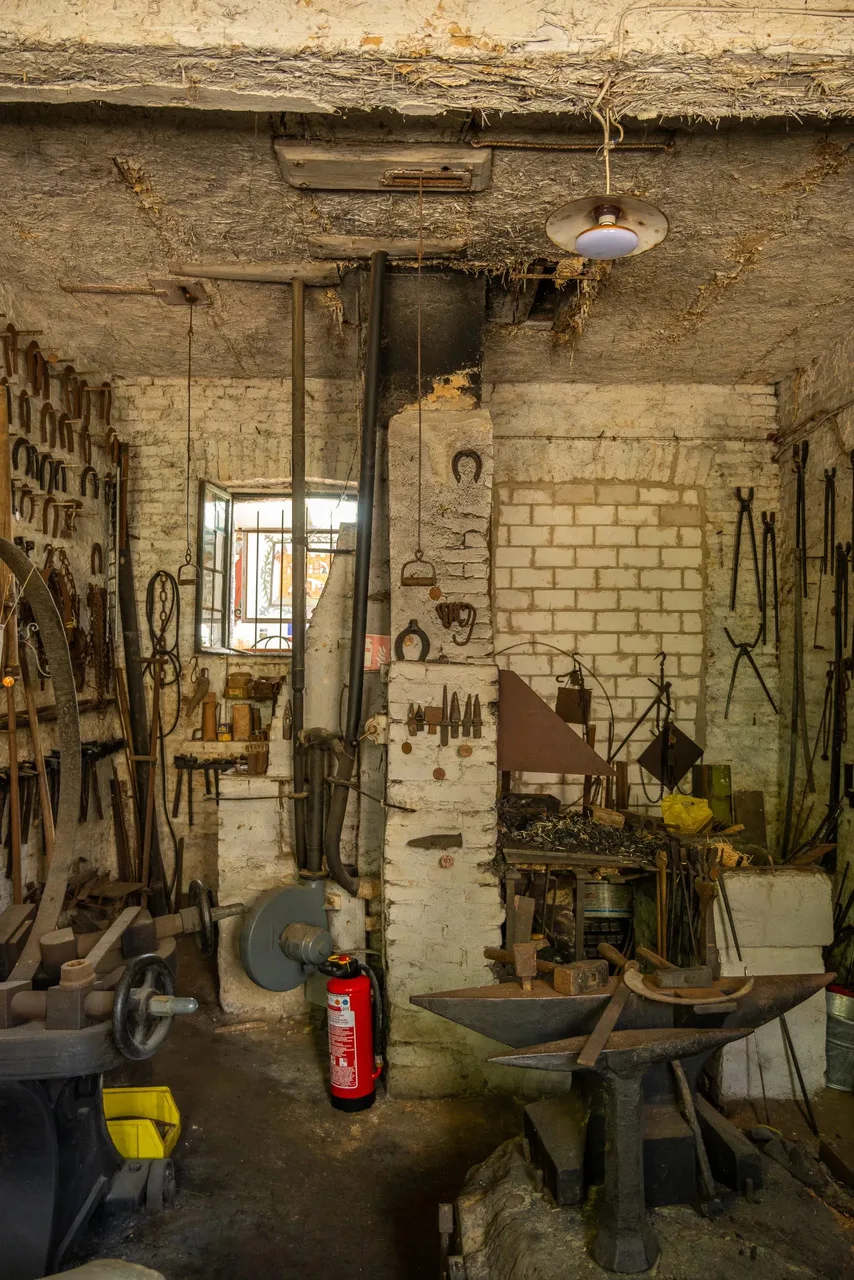
6. Follow in the footsteps of monastic life
The interior of the Grünberg has a remarkable religious past. In the Middle Ages, a large part of the town was owned by religious orders, who not only prayed here, but also cared for the sick, provided education and helped shape the town. During your visit, you will encounter various monastic buildings, each with its own story to tell.is fairly austere, but still impressive, with Romanesque columns, a sleek nave and some well-preserved works of art. Einhard’s tomb is also located there, but unfortunately it is not open to the general public.
The Antonian monastery and the old hospital
The most impressive religious building is undoubtedly the former monastery and hospital of the Saint Antonians, which still occupies a large part of the city centre. This order was dedicated to Saint Anthony, a saint whose bones were believed to have healing powers. That is why they focused strongly on caring for the sick.
Did you know… that the Antonians once owned almost half of Grünberg?
Today, the monastery is no longer in use, but the courtyard is accessible and definitely worth a visit. You can still see the structure of the old complex, although most of the buildings have now been converted into apartments. Be sure to take a look at the stone statue depicting Saint Anthony on one of the facades.
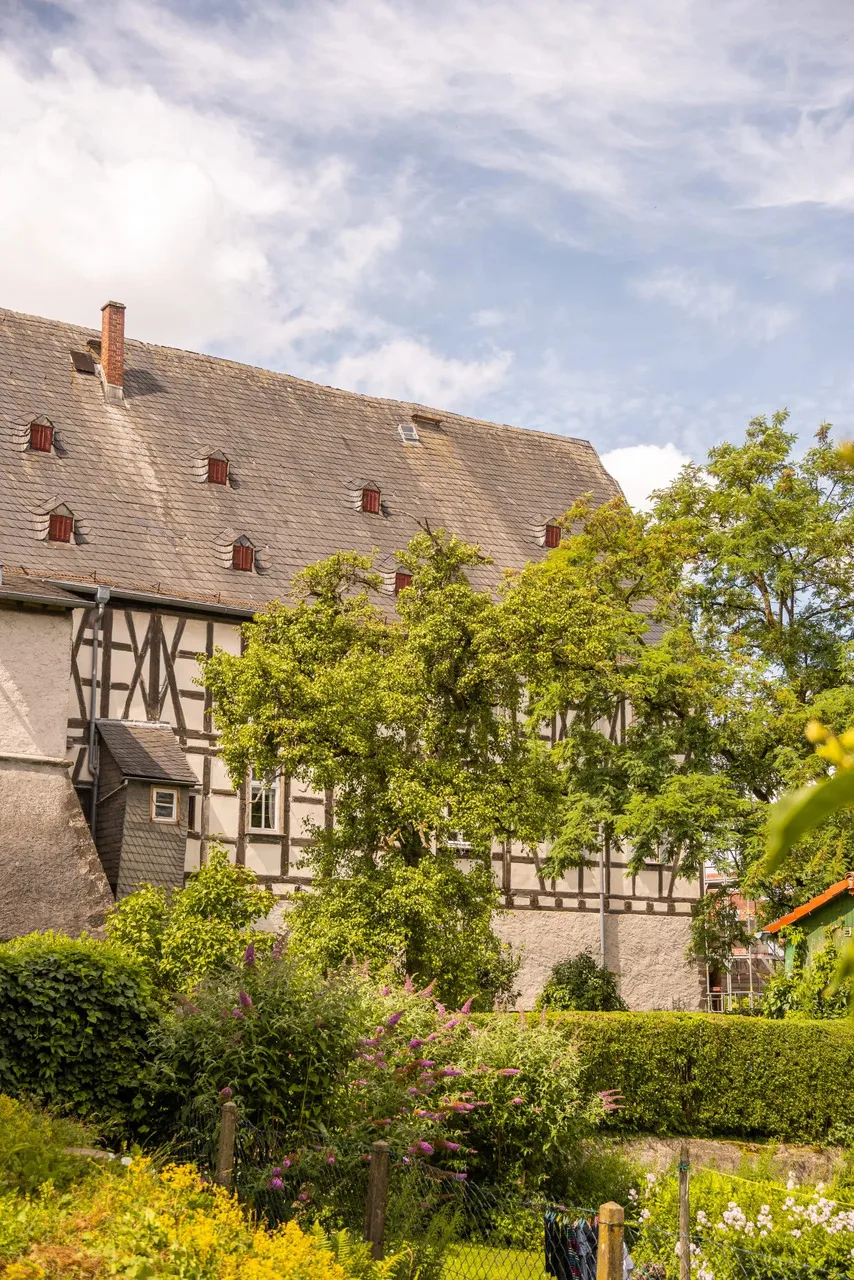
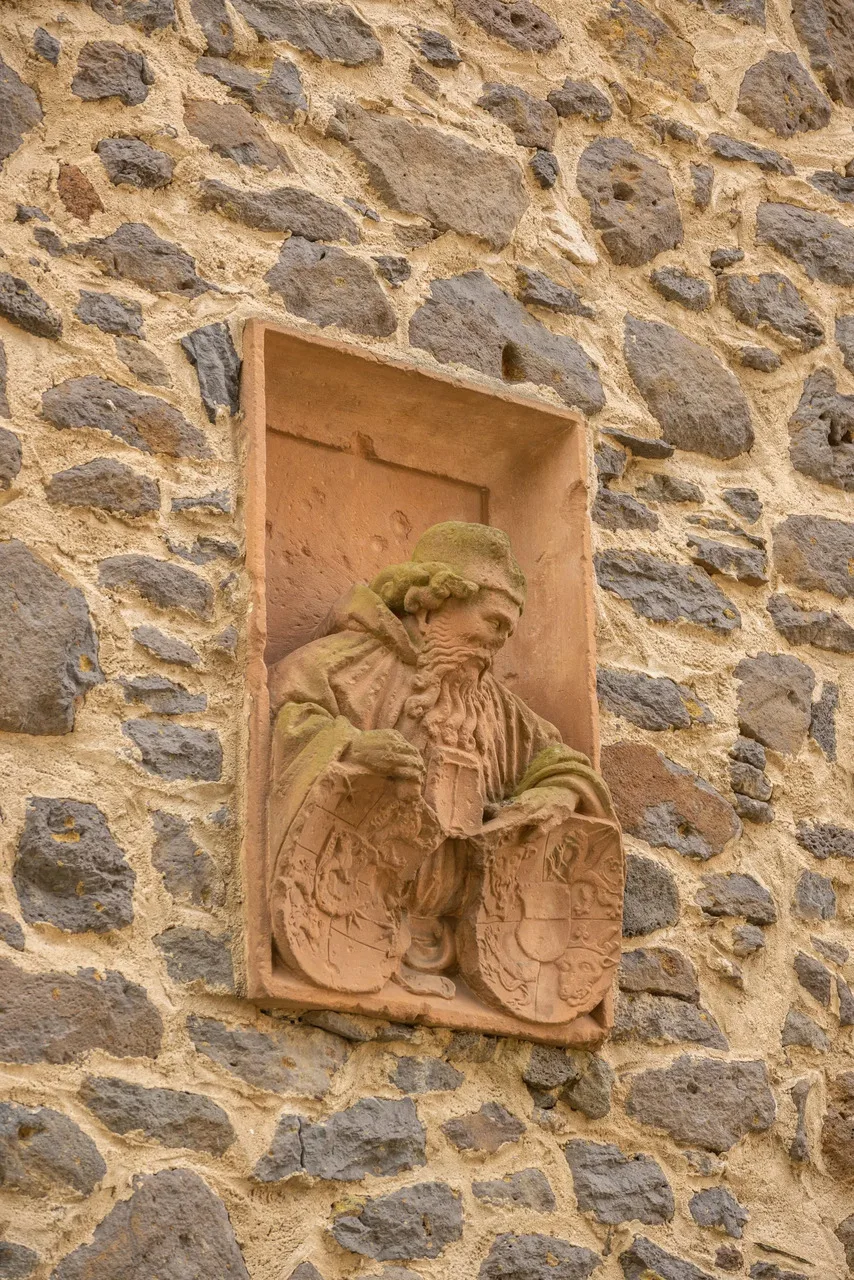
The nunnery
Elsewhere in the town, you will find a former nunnery, which was originally home to Beguines — independent religious women who lived in community. Over the centuries, they were forced to convert to another order: first the Franciscans, later the Augustinians.
The convent garden with its old graves is still accessible and is one of the quieter, more modest places in the town. You can walk among the trees and gravestones, with a view of the historic building that now serves as a museum.
Tip: Today, you will find the Theo Koch Museum here, dedicated to a well-known South American explorer from Grünberg.
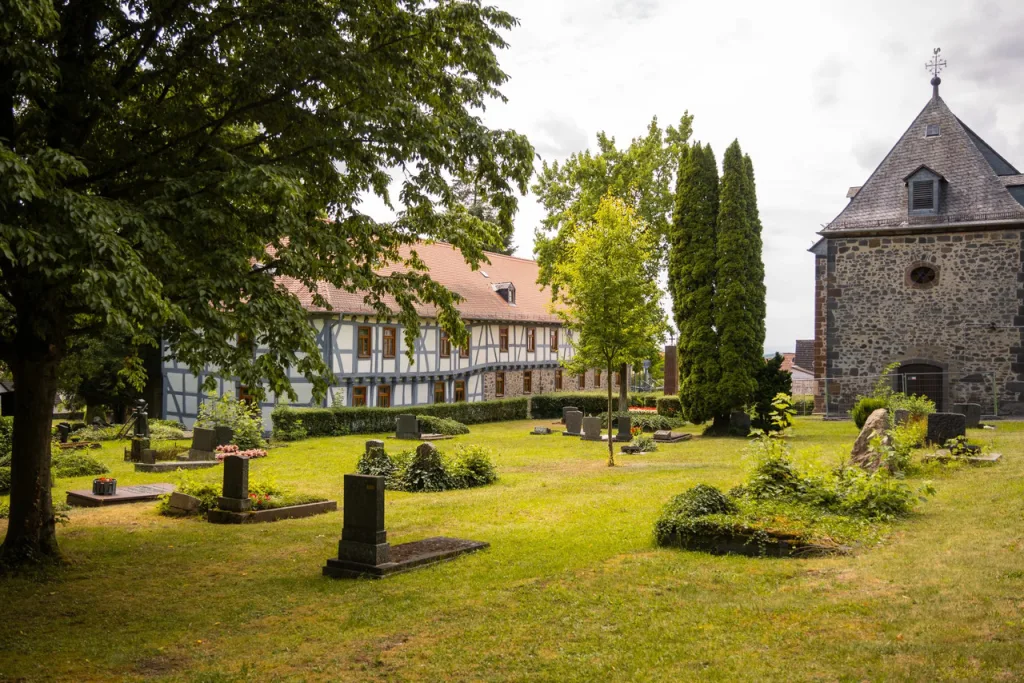
The Franciscan monastery
There is also another building: the Franciscan monastery, which was only in use for a few years. According to tradition, the monks did not adhere to their vows of chastity, poverty and obedience — and had to leave the monastery after barely five years.
But they are said to have left behind a secret: according to local legend, there is still a hidden treasure in or around the monastery. Around Christmas, you can even see a light that leads you to the treasure. This is certainly a children’s story, but it does add to the mystical atmosphere of the place.
7. Spot unusual houses and façades
Grünberg is full of half-timbered houses, but if you look a little closer, you will also discover a number of special houses with their own stories to tell. No two houses are built the same, and each façade tells a different story that goes back centuries.
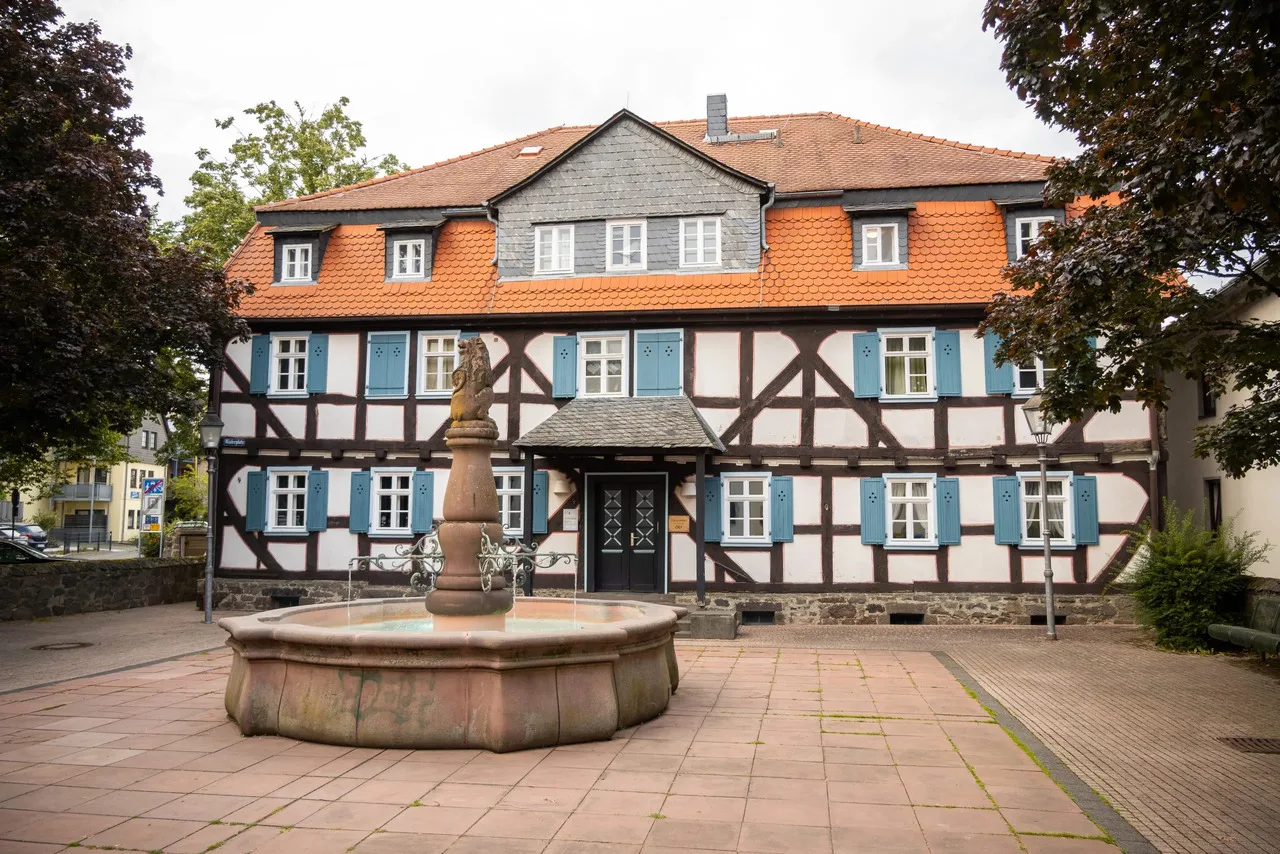
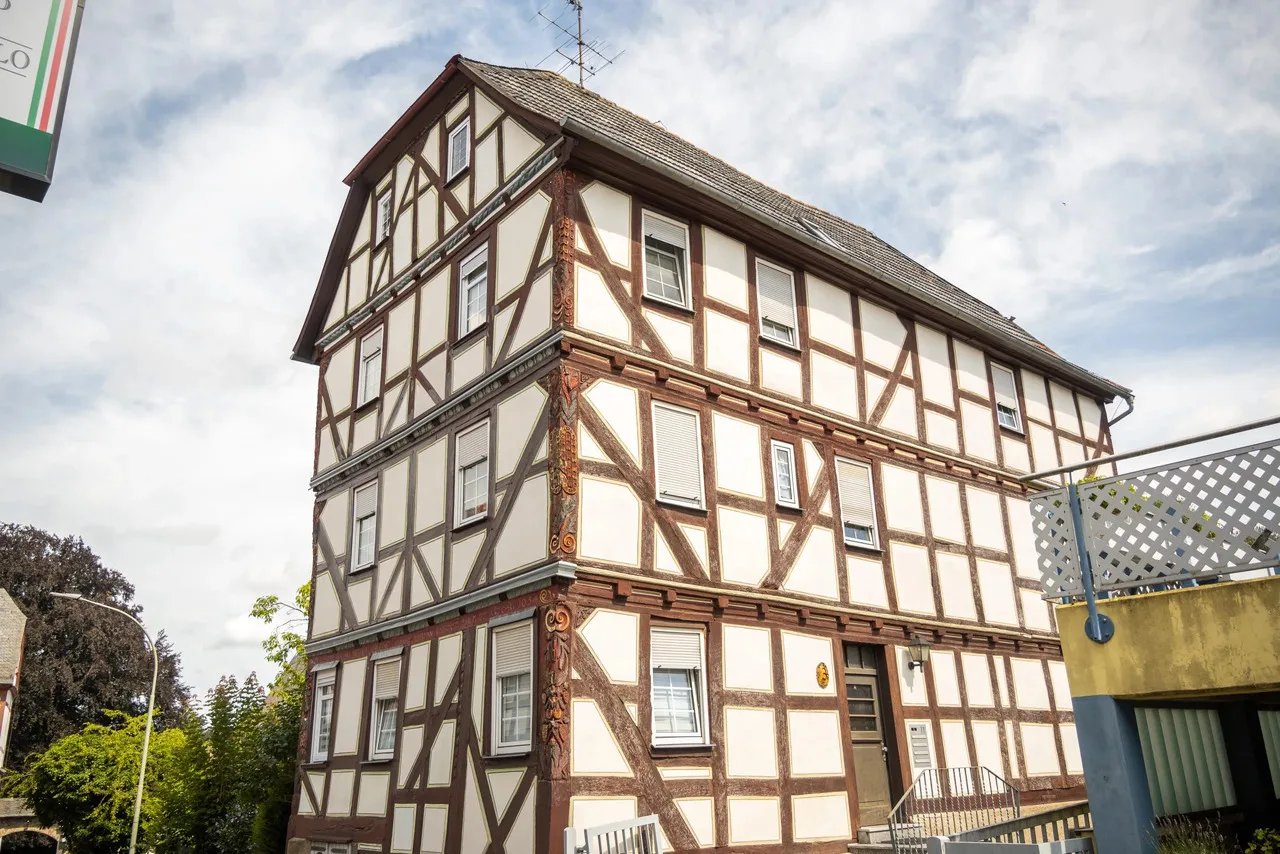
The house of the last executioner
Perhaps the most sinister house in Grünberg is the house of the last executioner. It is a beautiful half-timbered house with typical wooden structures, but its history is somewhat less cheerful: it was home to the man who was responsible for executions in and around the town until the 19th century. You cannot visit the interior, but it is certainly a special place to take a look at. You will find the house at Hintergasse number 60.
The former brewery (now a wedding venue)
Just before you descend into the valley, you will pass a beautiful historic building that is now known as the Trauzimmer – or the town’s wedding venue. It used to be a farm brewery, strategically located close to the springs so that water could be pumped up for brewing beer.
The building dates from the end of the 17th century and has been beautifully restored. Today, you can officially get married there, making it a popular location for local couples. No wedding plans? It’s still worth stopping by!
A hidden passageway on the Marktplatz
On the Marktplatz itself, you will find a narrow passageway with a small gate, which was once used by merchants to access the stables. This was where travellers parked their horses (think of it as a medieval car park). It is easy to walk past if you don’t know it’s there, so keep your eyes open — this is one of those hidden details that you only find if someone points it out to you.
Extra tip: many houses have details on the façade (such as the Hessenman) that tell you when it was built. Beams made from a single piece of wood? Then it dates from before 1500. Built up floor by floor? Then it was rebuilt later after one of the great city fires.
8. Follow in Martin Luther’s footsteps
Grünberg may not be the first town that comes to mind when you think of Martin Luther, but he did leave a small mark here. During one of his travels, he spent a night in an inn on the market square.
That inn no longer exists — it was demolished — but on the exact same spot you will now find a model of the original building. It’s a small detail, but the locals are visibly proud of it. And rightly so: as a reformer of the church, Luther is still a name of great importance in Germany.
In the garden of the nunnery, you will also find a wooden monument made in honour of Martin Luther.
Extra tip: many houses have details on the façade (such as the Hessenman) that tell you when it was built. Beams made from a single piece of wood? Then it dates from before 1500. Built up floor by floor? Then it was rebuilt later after one of the great city fires.
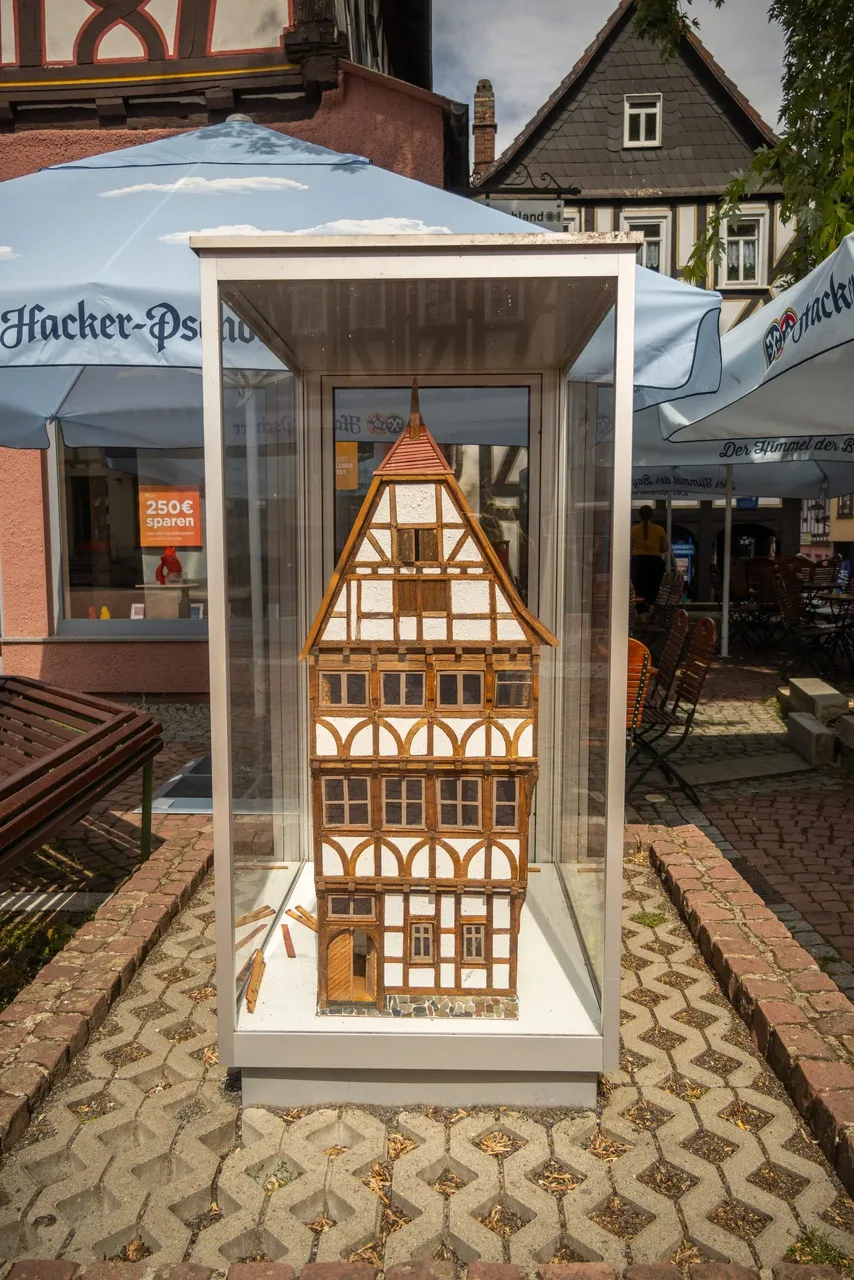
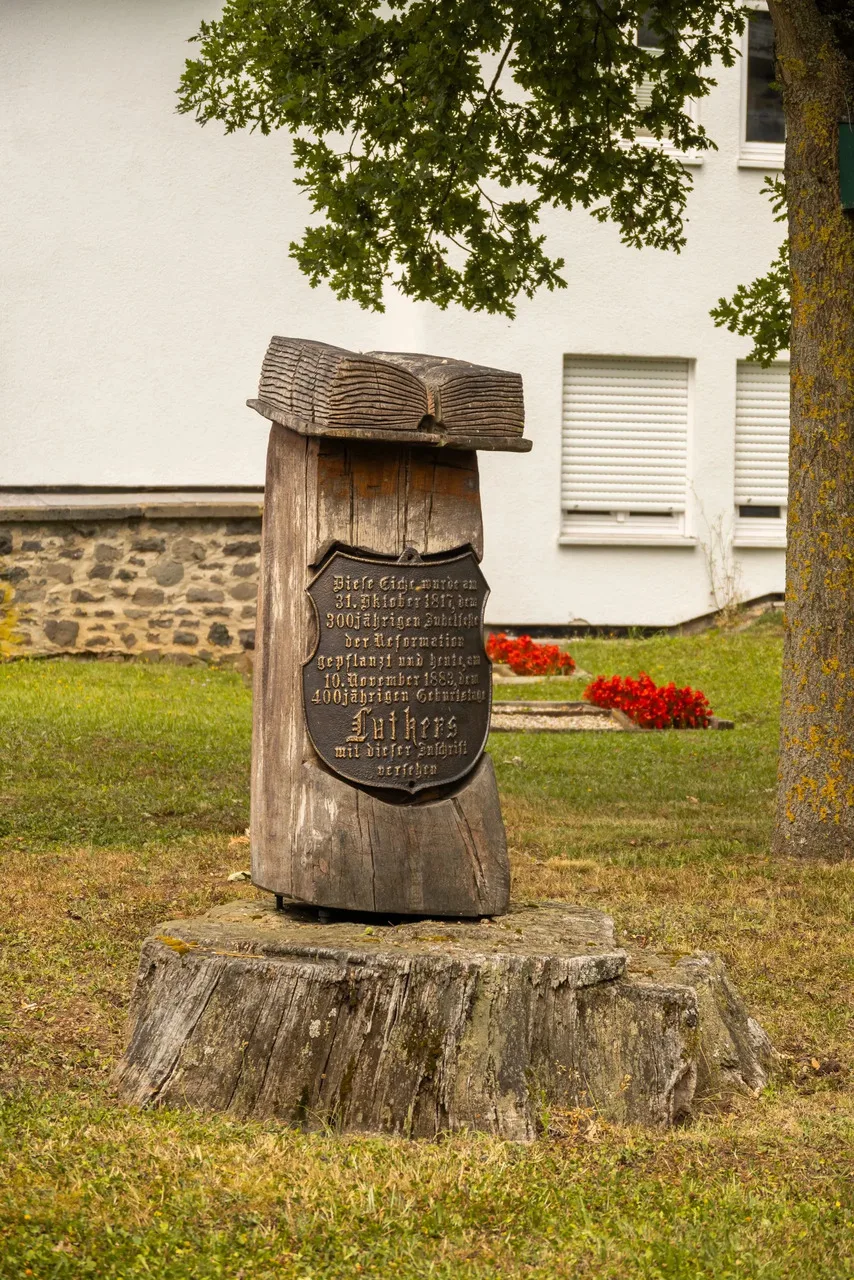
9. Take a moment to admire the university building
You might not expect it from a small half-timbered town like Grünberg, but it used to have its own university. It was quite prestigious and had links with universities in larger German cities.
Today, of course, the university is no longer active, but the building still stands. It is located just outside the centre, near the old hospital of the Saint Antonians. You will recognise it immediately by its stately appearance — it is a more imposing building than most of the half-timbered houses around it.
You cannot visit it inside, but it is definitely worth stopping by and walking around.
10. Try the local schnapps: Schusterpech
If you enjoy discovering local flavours when travelling, you should definitely try a glass of Schusterpech in Grünberg. This herbal liqueur is a typical schnapps from the region and has a somewhat… unusual name. Schusterpech literally means shoemaker’s grease and refers to the black polish that shoemakers used to use to maintain leather shoes.
Fortunately, it tastes better than it sounds — so don’t expect shoe polish, but rather a strong, spicy schnapps with character.
The name is a nod to the past: Grünberg used to have a striking number of shoemakers. It was an important craft in the town, so they thought it appropriate to name the local drink after it.
You can sample Schusterpech in a few cafés in the centre, or take a bottle home with you as a souvenir. Just be warned: it’s not a drink to knock back in one go — this is one to sip slowly.
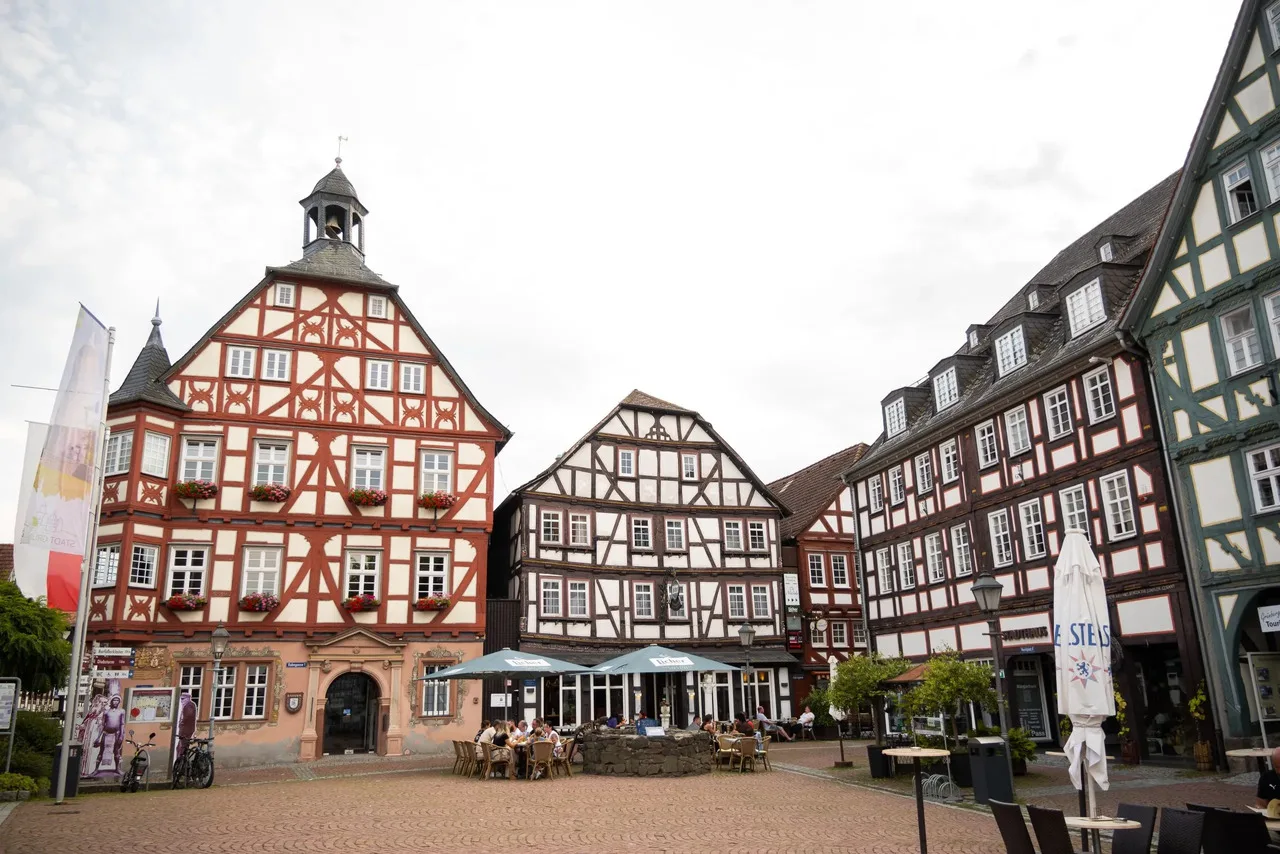
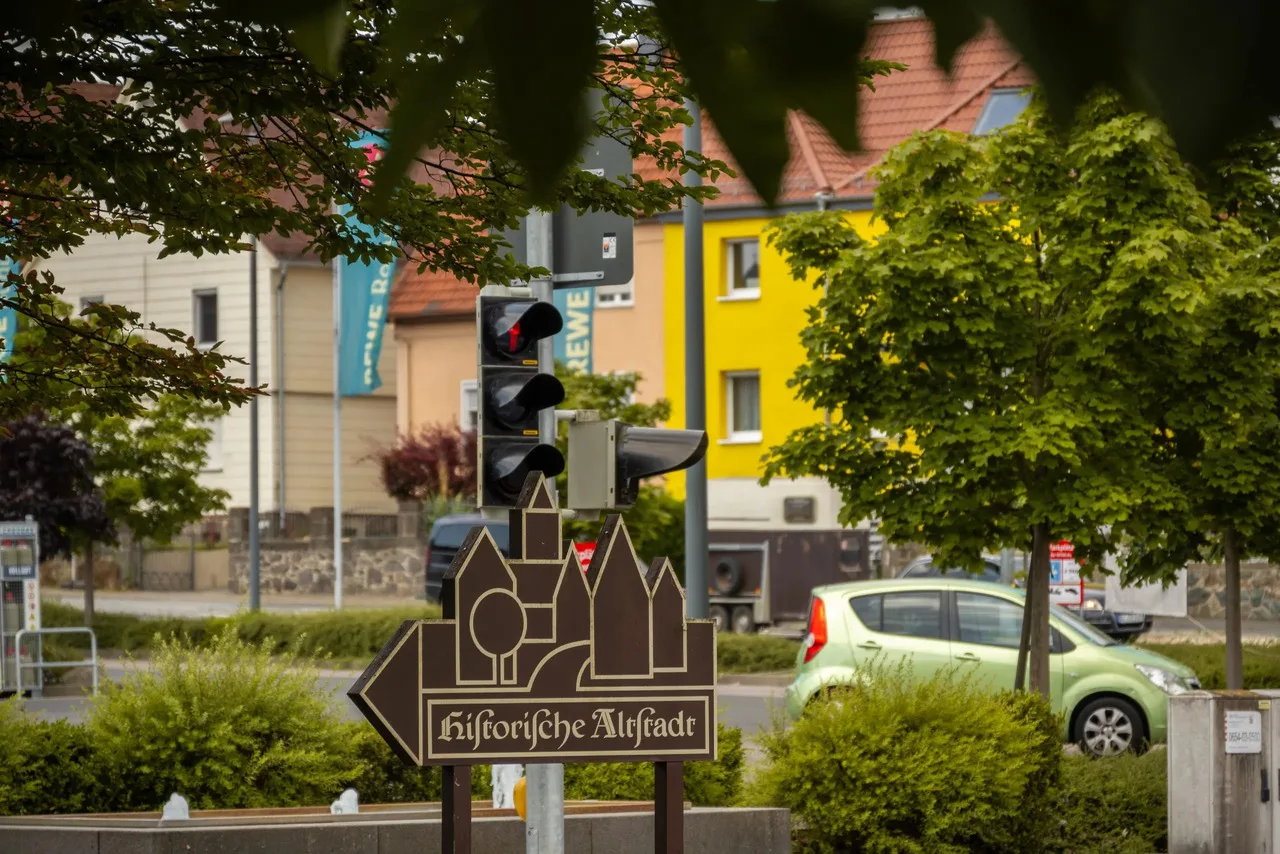
11. Visit the Friday morning market
Are you in Grünberg on a Friday? Then be sure to head to the Marktplatz, where a small but delightful weekly market takes place in the morning. Don’t expect a large market with tourist stalls, but rather a charming local affair where residents come to buy their fresh produce.
You will find:
- Fresh fruit and vegetables from local farmers
- Cheese, meat products and bread from local producers
- Seasonal products such as flowers, honey or homemade jam
What makes this market so enjoyable is the atmosphere. You are literally surrounded by locals — people who know each other, stop to chat and do their shopping for the weekend. And this happens every Friday morning, usually from around 8 a.m. to 12 p.m.
It’s also the ideal opportunity to start your visit to Grünberg with a coffee on a terrace, while people watching. Combine it with an ice cream afterwards and you’re all set!
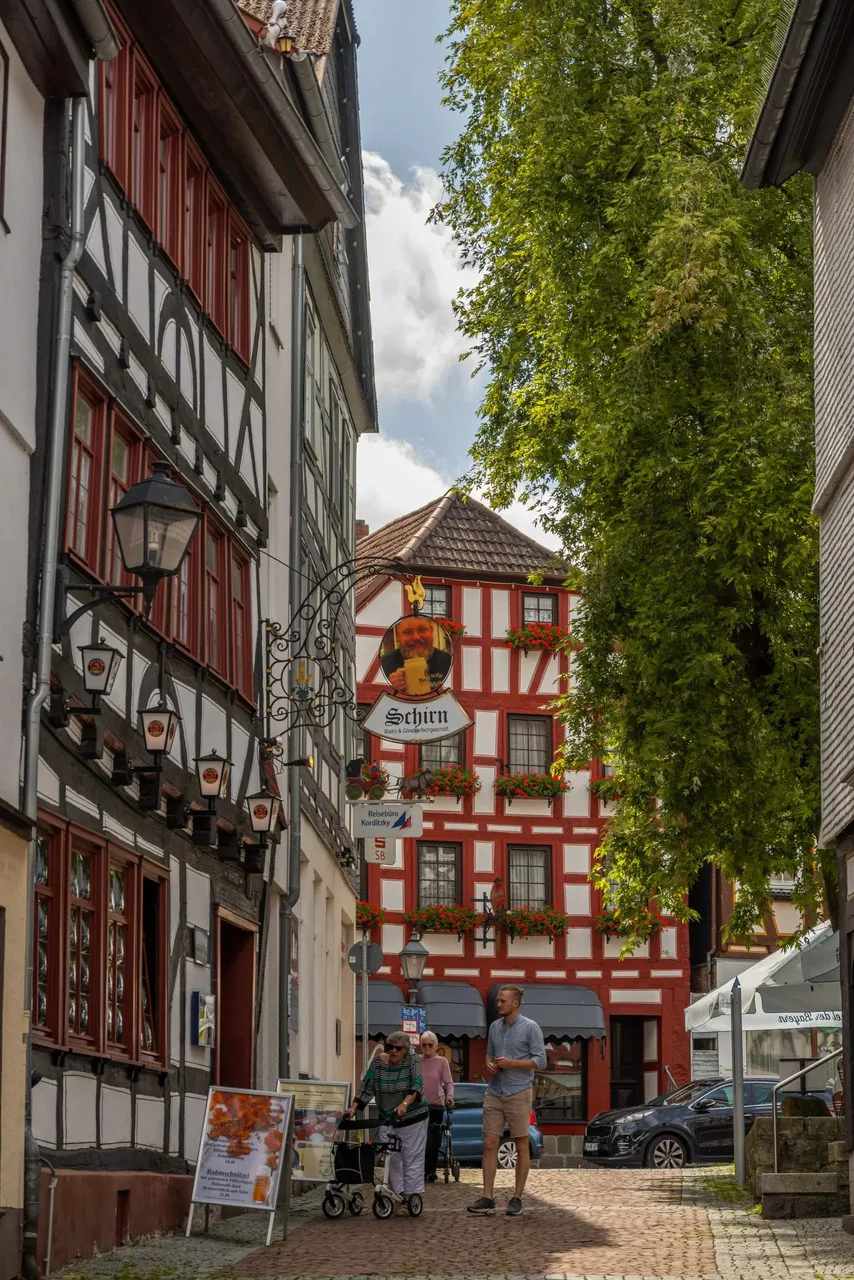
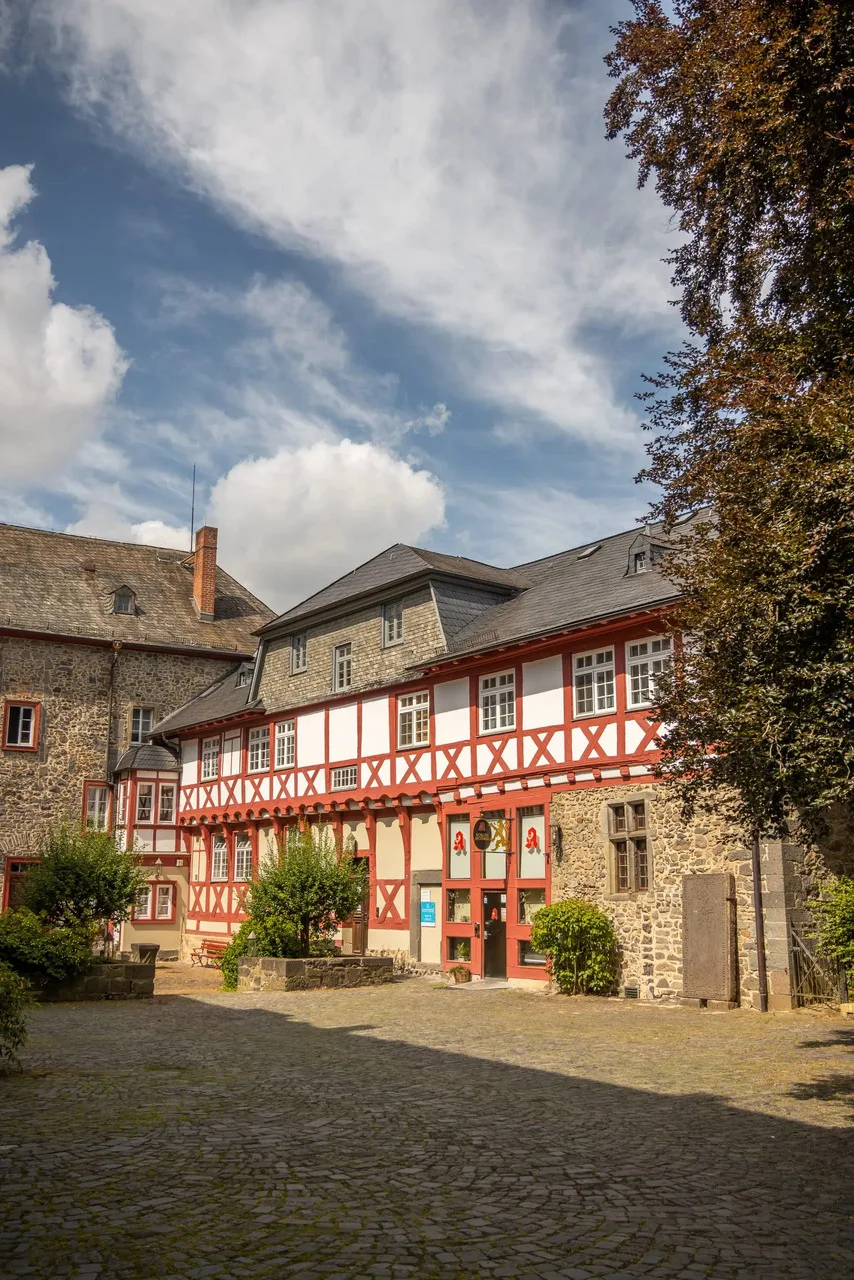
12. Food & drinks in Grünberg
Grünberg is not a culinary hotspot, but you can enjoy delicious and, above all, local food there. From a hearty schnitzel to an Italian pizza, and from an ice cream on the square to a beer in a hidden garden — these are the places I was recommended:
Ristorante Pizzeria Al Castello
Fancy something Italian? Then you’ve come to the right place. Al Castello is located in the centre of Grünberg and serves classic pizzas, pastas and other Italian dishes in a relaxed atmosphere. Not fancy, but tasty.
Bistro Schirn
One of the most local places in Grünberg, located in a beautiful old half-timbered house. It’s cosy and you can enjoy honest, homemade food — from daily specials to typical German classics. They also have a terrace on the market square, so in summer you can enjoy a beautiful medieval view!
Ralf Liepert
This place doesn’t look particularly special from the outside, but at the back there is a small, charming biergarten where you can enjoy hearty German food. Think schnitzel, chips, vegetables… just like grandma would make it. Ideal for a no-nonsense meal accompanied by a good local beer.
Tip: Want to try something typical of the region? Order a Licher, a light lager. This beer is brewed in a few villages near Grünberg and is pretty much the standard beer in cafés and restaurants.
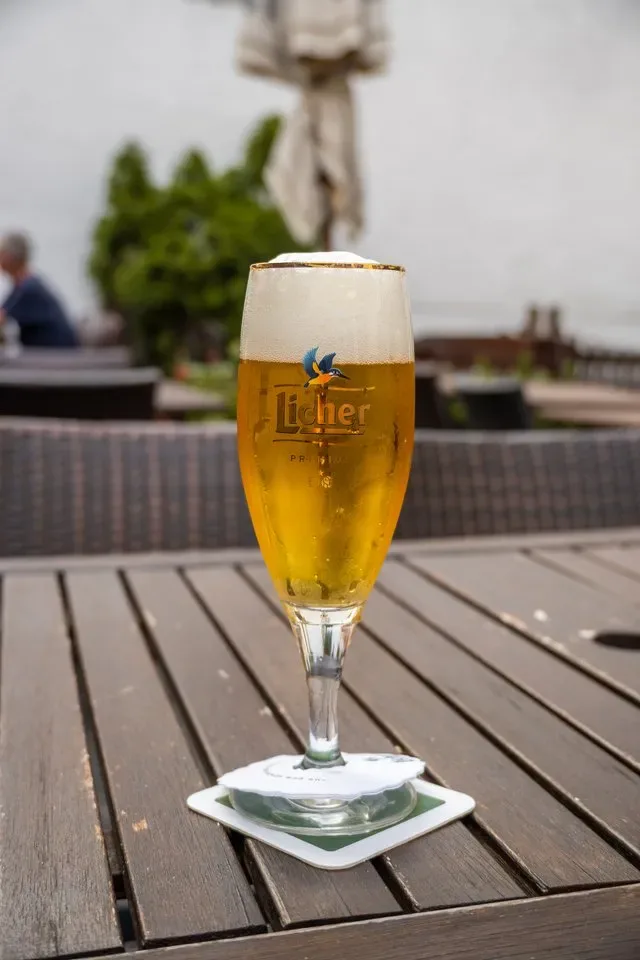
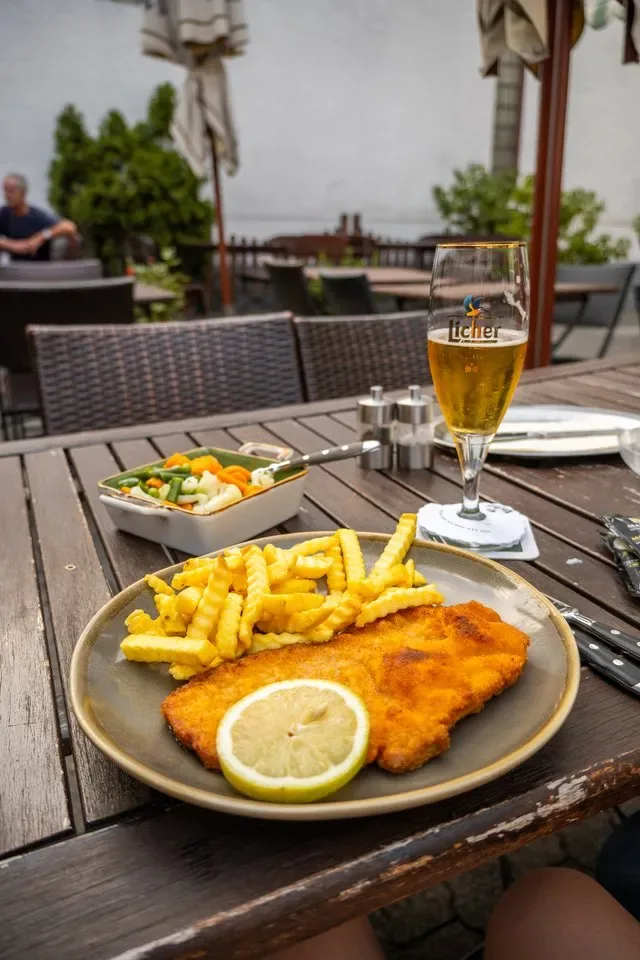
IJscafé Marktplatz
Perfect for a break after a walk or a visit to the market. I had an ice cream on the terrace here and it tasted surprisingly good. Especially when the sun is shining, this is a nice place to sit down and enjoy the lively market square.
13. Spending the night in Grünberg
I stayed at the Sporthotel Grünberg, a large and practical hotel just outside the town centre. Don’t expect a charming boutique hotel, but you can expect:
- spacious and well-kept rooms,
- a breakfast buffet with everything you need,
- a restaurant for those who don’t want to go out in the evening,
- and a beautiful view of the valley and surrounding hills.
The hotel is located on a hill across from the town, so it takes about 25 minutes to walk through the valley to the centre of Grünberg. That may sound a bit far, but the walk is actually very beautiful — especially because you walk past the water sources along the way!
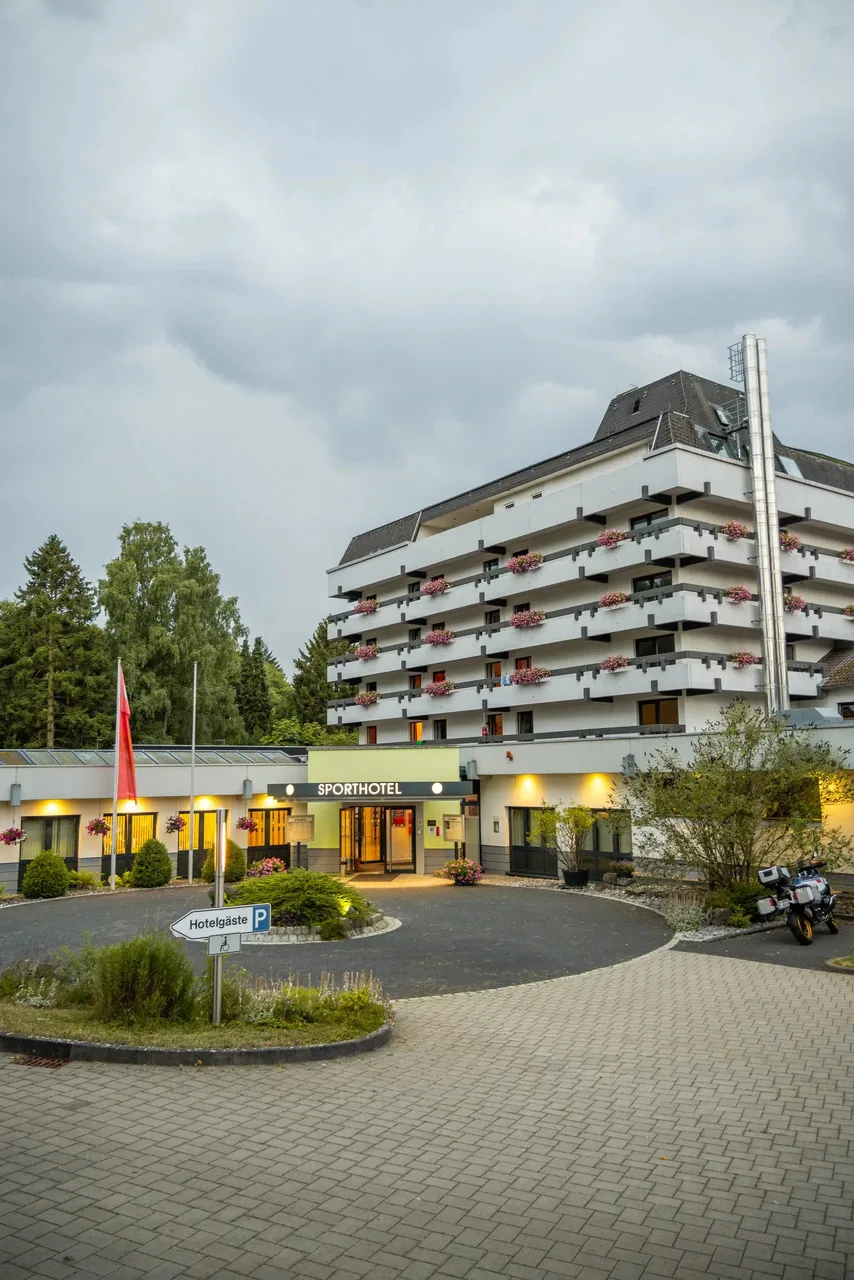
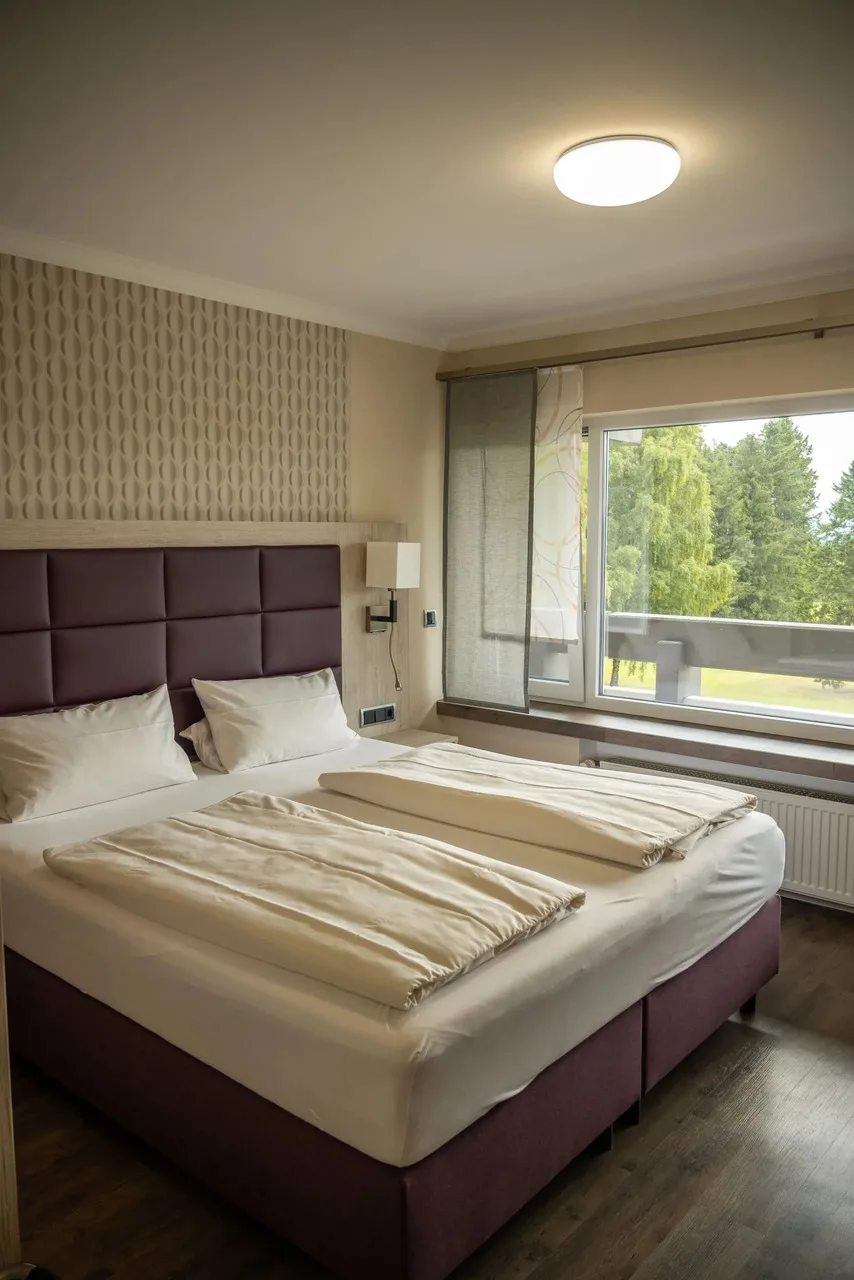
Is Grünberg worth a visit?
Absolutely! Grünberg may not immediately ring a bell, but that’s what makes it so charming. You won’t find crowds of visitors here, just a quiet town full of character and history. I found it the perfect stopover on my motorbike trip through Germany! Have you been to Grünberg yourself and do you have any tips? Be sure to let us know in the comments below!
